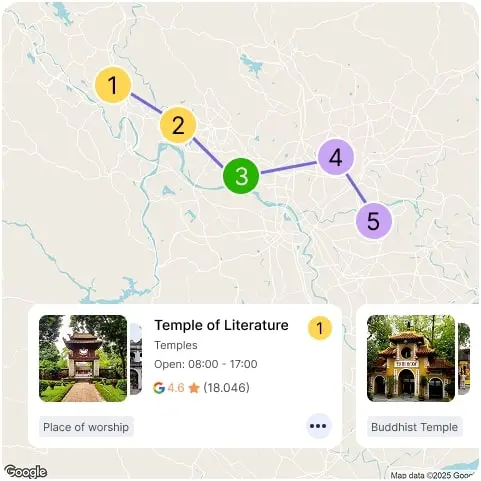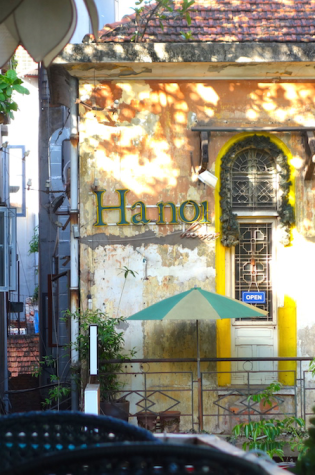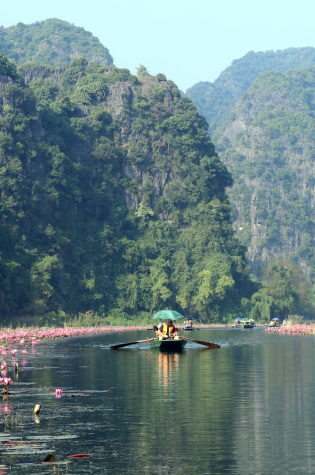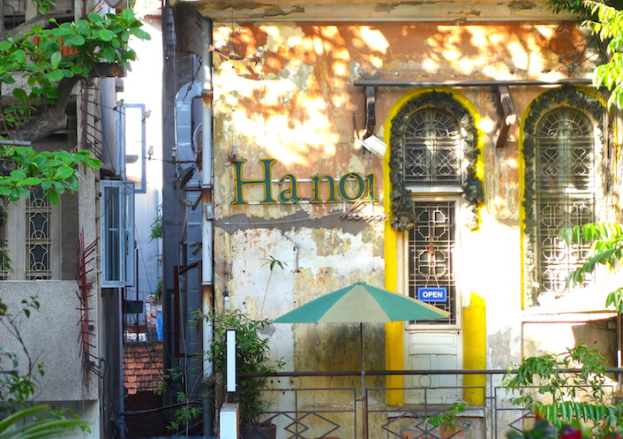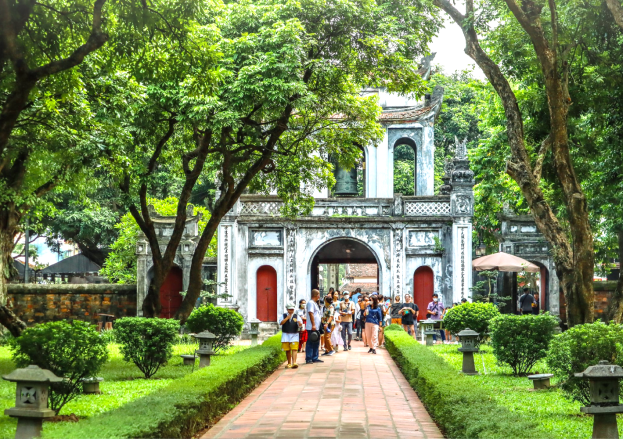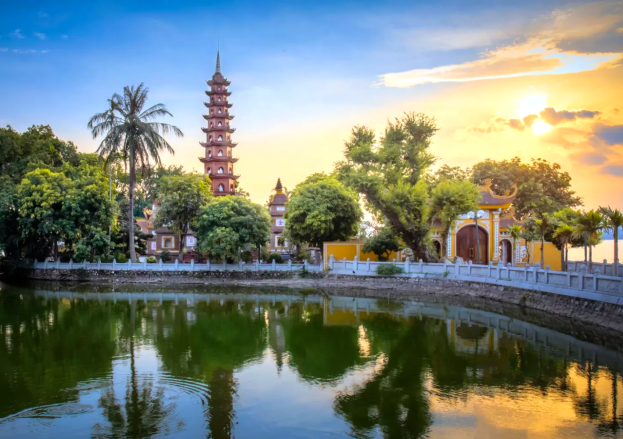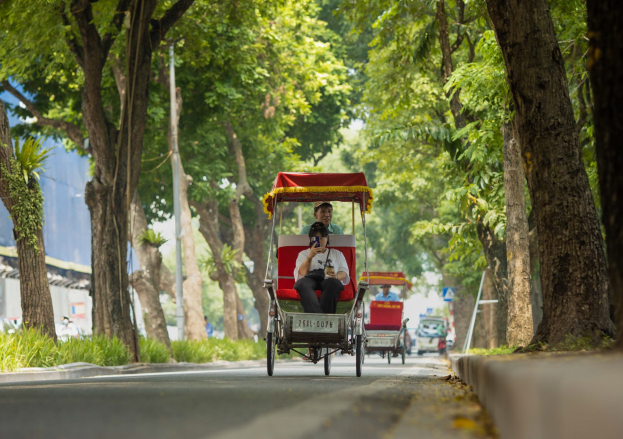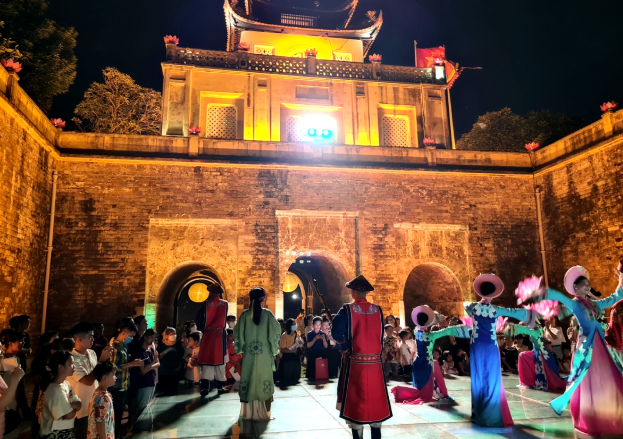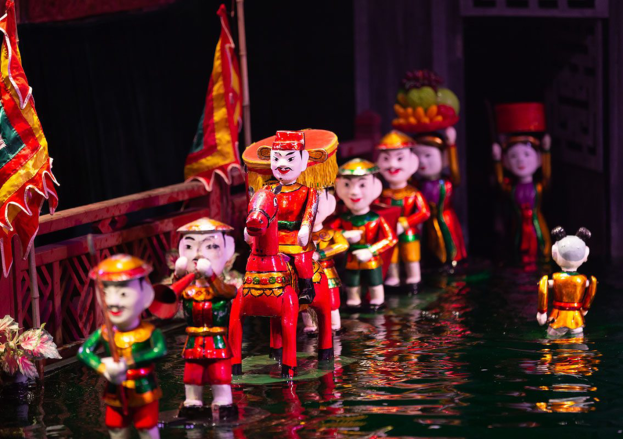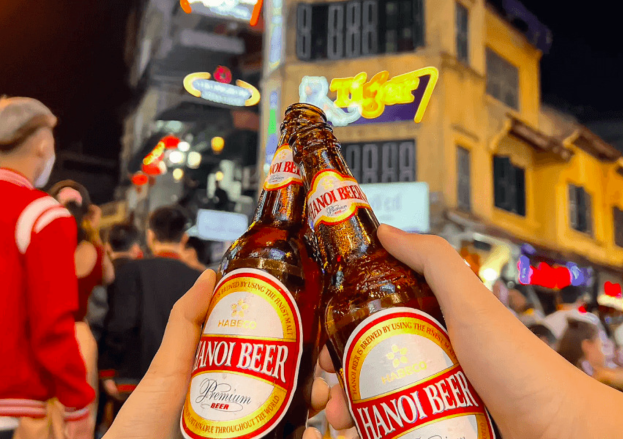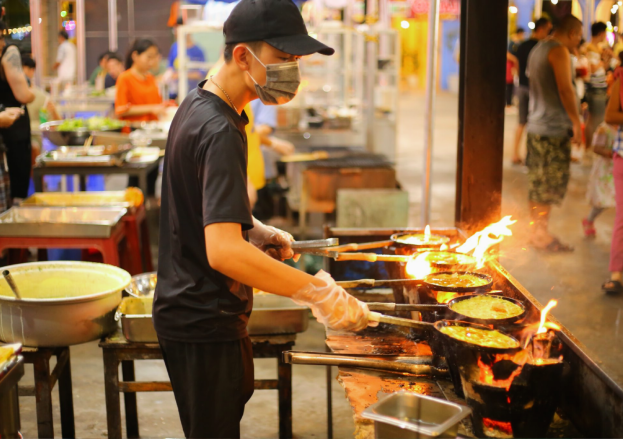
Nature & Adventure
Vietnam is a land of diverse natural wonders, from towering mountains and dense forests to winding rivers and pristine coastlines.Each landscape invites exploration, adventure, and a closer connection to the country’s diverse ecosystems.
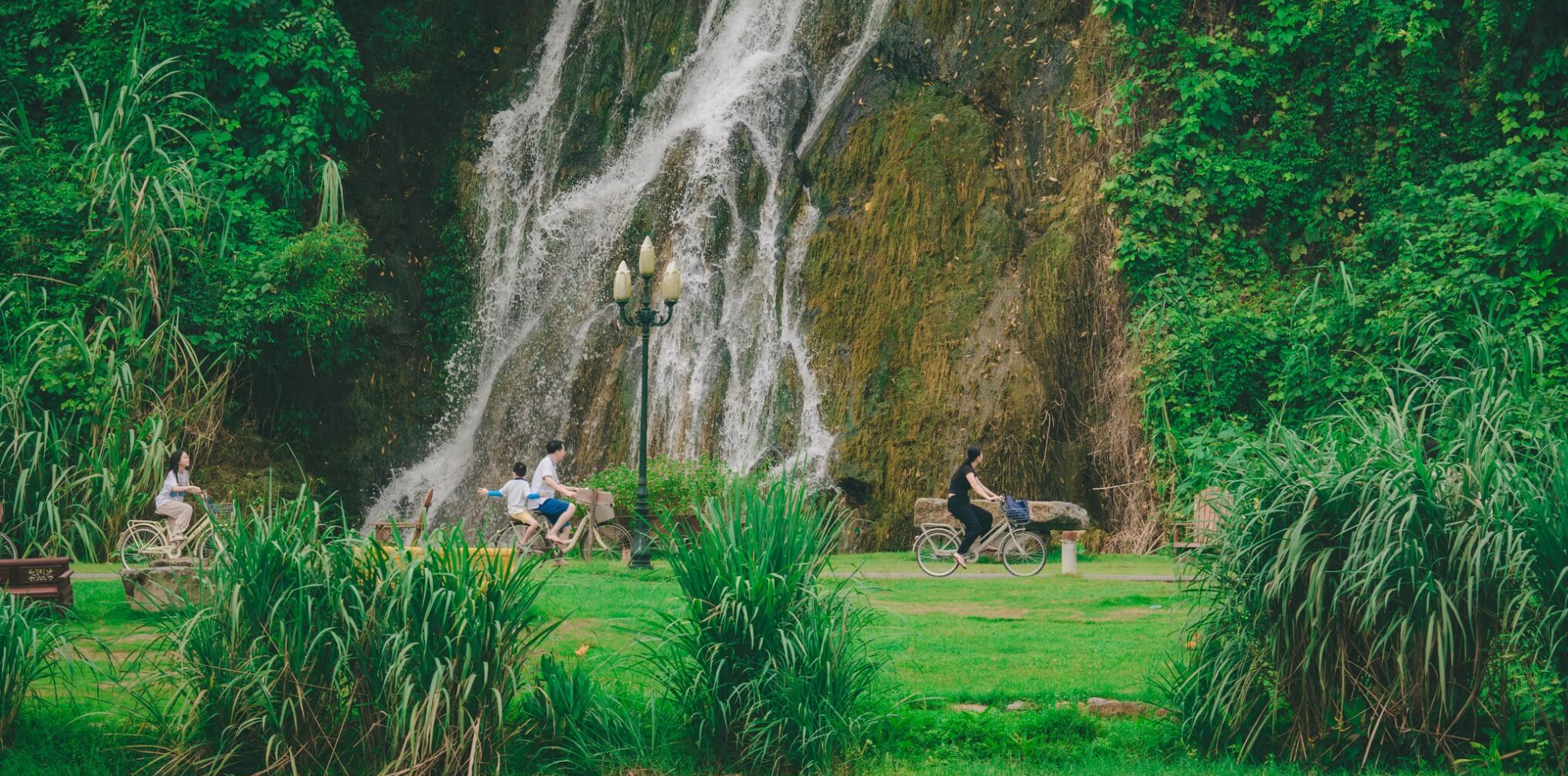
Dong Chuong Lake Pine Hill – A green paradise in the heart of Ninh Binh
17 Nov, 2025
1. Dong Chuong Lake Pine Hill – A peaceful green retreat in the heart of Ninh Binh Dong Chuong Lake Pine Hill, located within the Trang An Golf & Resort, spans over 45 hectares and combines clear blue waters, centuries-old pine forests, and a nature-friendly resort space. It is an ideal destination for those who want to escape the busy city life and immerse themselves in peaceful nature. Just under a two-hour drive from Hanoi, Dong Chuong Lake Pine Hill offers an open and refreshing atmosphere reminiscent of a highland area, with cool, clean air and panoramic views of the lake and endless pine forests. Green Pine Camp, the premium resort on site, provides a variety of accommodations from bungalows and villas to glamping, combining modern amenities with relaxing outdoor spaces. Beyond relaxation, visitors can enjoy a range of exciting outdoor activities such as zipline, go-karting, kayaking, archery, an infinity pool, cycling, grass sliding, and giant swings. The pristine pine forest ecosystem surrounding Dong Chuong Lake is carefully maintained, preserving its natural beauty while creating a space close to nature, perfect for photography and immersive experiences. 2. Pristine ecosystem and nature at Dong Chuong Lake Pine Hill Dong Chuong Lake Pine Hill is renowned for its primeval pine forest stretching around the lake, creating a peaceful and open space. Tall straight pine trees combined with the cool breeze from the lake provide a sense of relaxation and closeness to nature the moment visitors arrive. The ecosystem here is extremely diverse with a variety of flora and fauna, from birds and butterflies to native plants and wildflowers, forming a vibrant and colorful natural landscape. This green and refreshing space is not only ideal for strolling and sightseeing but also perfect for photography and check-ins, capturing memorable moments amid the pine forest and clear blue waters. What makes the area special is the care and conservation by humans, which preserves the forest and lake in their pristine state while ensuring convenience and safety for visitors. Pathways, resort areas and activity zones are harmoniously arranged, without disrupting the natural scenery, creating a space that is both close to nature and easy to explore and enjoy. 3. Outdoor recreational activities at Dong Chuong Lake Pine Hill Adventure activities Visitors who love thrills can fully enjoy exciting adventure games. The zipline lets you soar over the green pine forest giving a sense of flying freely amidst nature. Go-karting is perfect for those who want to test their speed and driving skills on a safely designed track. In addition grass sliding down gentle slopes of the pine hills provides a fun experience while staying active and enjoying the surrounding natural scenery. Water activities The clear waters of Dong Chuong Lake are ideal for water-based activities. Visitors can kayak to explore every corner of the lake and feel complete peace on the calm water surface. Those who prefer relaxation can stroll along the lakeside or swim and immerse themselves in fresh air and warm sunlight while enjoying the cool and tranquil atmosphere from the lake and pine forest. Harmony between activities and nature What makes Dong Chuong Lake Pine Hill special is that all activities are designed to blend harmoniously with the surrounding nature. Every experience from adventure to relaxation allows visitors to explore the beauty of the pine forest, lake and green spaces creating unforgettable memories. These activities are not only fun but also help visitors feel calm, peaceful and deeply connected to nature. Family or group activities Dong Chuong Lake Pine Hill is also an ideal destination for families, groups of friends or couples. The giant swing allows visitors to play and enjoy panoramic views of the pine forest and lake from above. Cycling through the pine forest or walking along the trails offers relaxation, strengthens bonds among group members and provides a close connection with peaceful nature. 4. Tips and advice for visitors at Dong Chuong Lake Pine Hill Ideal time to visit Dong Chuong Lake Pine Hill is beautiful all year round but spring and summer are considered the best times to visit. In spring, the lush pine forest blends with the clear lake and fresh air, creating a peaceful and vibrant landscape. In summer, the cool and pleasant climate is perfect for outdoor activities such as kayaking, cycling, grass sliding or enjoying the attractions at Green Pine Camp. Preparing personal items To make the most of your trip, visitors should bring a camera or a phone with a good camera to capture beautiful moments. Clothing should be comfortable and suitable for outdoor activities such as sportswear and soft shoes. If you plan to participate in water activities like kayaking or swimming, bring swimwear and a towel. Sunscreen, a hat, sunglasses and drinking water are also essential to protect your health and stay hydrated while exploring. Safety tips for adventure activities Some adventure activities at Dong Chuong Lake Pine Hill such as zipline, go-karting or grass sliding offer thrills but also carry risks. Visitors should follow staff instructions, wear all safety equipment such as helmets, harnesses and gloves if provided. Check your health before participating and avoid adventure activities if you have dizziness, high blood pressure or heart problems. Maintaining a safe distance from others also ensures the experience is fun and safe. Additional tips for a smooth visit Plan to visit early to avoid large crowds on weekends Bring a small bag for personal belongings for convenience while moving around If visiting with a group or family, coordinate the schedule so everyone can fully enjoy all activities With these tips and advice, visitors can have a fun, safe and memorable experience at Dong Chuong Lake Pine Hill, enjoying pristine nature, green spaces and a variety of recreational activities. Dong Chuong Lake Pine Hill leaves a lasting impression with its peaceful pine forests and tranquil lake. Every visit brings a chance to reconnect with nature and enjoy moments of calm and reflection. It is truly a green sanctuary in the heart of Ninh Binh.
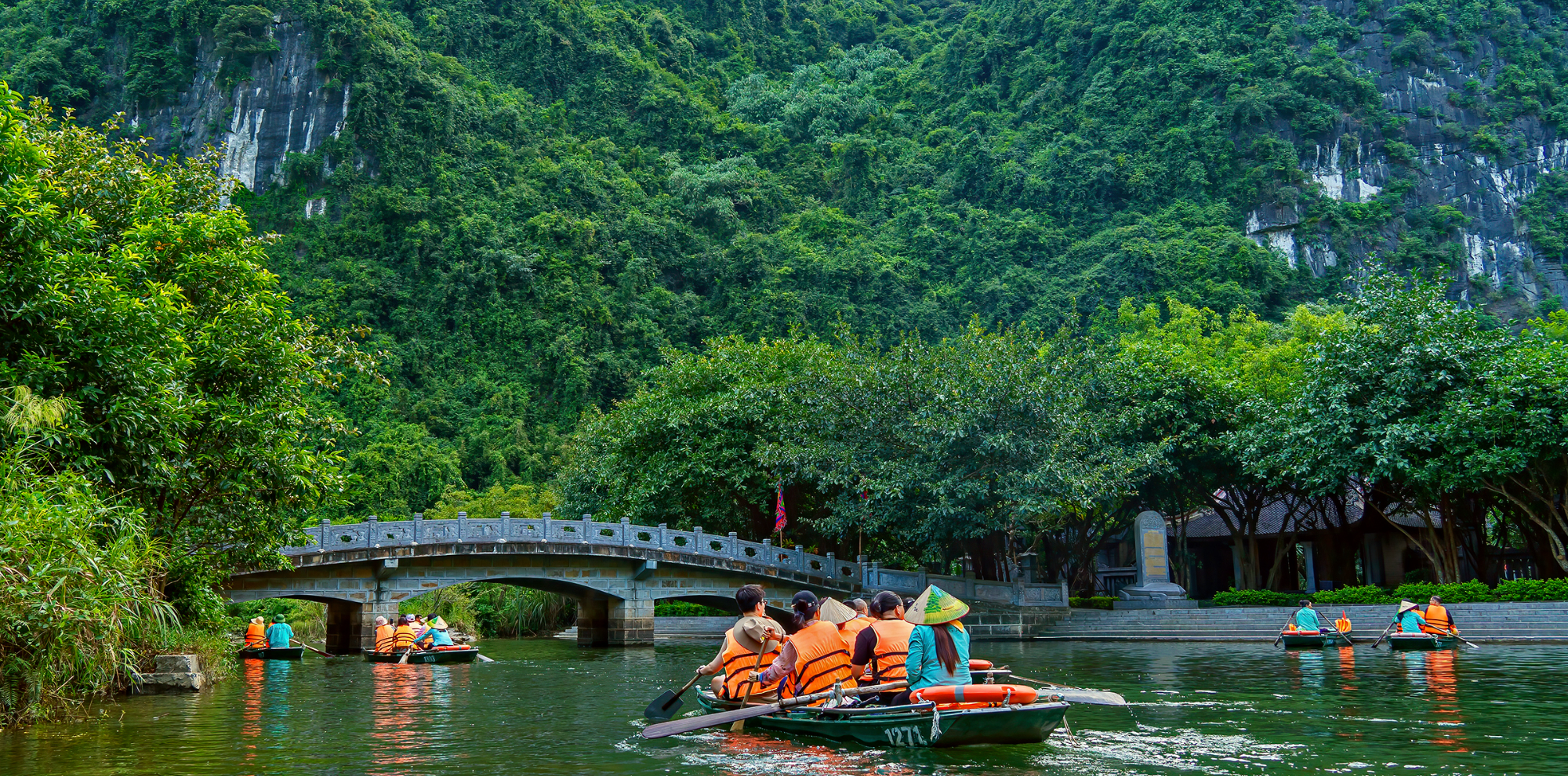
Explore 12 picture-perfect spring destinations in Ninh Binh
17 Nov, 2025
1. Hoa Lu ancient capital Hoa Lu Ancient Capital, located in Ninh Binh province, was the first capital of Vietnam after more than a millennium under Chinese rule. This historic site not only marks the footsteps of dynasties such as Dinh and Early Le but also preserves a wealth of cultural, architectural and religious values. The Hoa Lu complex includes temples dedicated to King Dinh Tien Hoang, King Le Dai Hanh and many other ancient structures, recognized by UNESCO as a special national heritage site. Every spring, from the 8th to the 10th day of the 3rd lunar month, Hoa Lu becomes vibrant with traditional festivals. Beyond the ceremonies honoring the kings, the festival also revives ancient customs and beliefs through activities such as dragon and lion dances, Quan ho folk singing and traditional games. The sight of weathered temples and moss-covered stone walls combined with the blooming peach and apricot flowers allows visitors to step back in time and experience a part of the nation’s heroic history while immersing themselves in traditional culture. 2. Trang An scenic landscape complex Trang An is a natural masterpiece featuring a network of limestone mountains, winding rivers and countless mysterious caves. The emerald-green waters reflect the sky and clouds creating a serene yet majestic landscape. Visitors can enjoy a variety of unique experiences at Trang An. Rowing along the rivers and weaving through caves with fascinating formations one can feel the harmony between nature and culture where history and folk legends remain alive. Along the river, ancient pagodas, temples and enormous rocks with unusual shapes appear making every tour both relaxing and enlightening. The quiet space accompanied by the gentle sound of flowing water and birdsong makes Trang An an ideal destination for travelers seeking balance, peace and a deep connection with nature. 3. Bai Dinh Pagoda Bai Dinh Pagoda stands majestically on the slopes of Bai Dinh Mountain and is part of the famous spiritual tourism complex in Ninh Binh. It is one of the most renowned pagodas in Vietnam with numerous national records in terms of size, number of Buddha statues and unique architecture. The surrounding area is covered with lush green forests and fresh air, offering visitors a sense of peace and tranquility as soon as they arrive. The highlight of the pagoda is the 13-story Stupa, which offers a panoramic view of the entire pagoda complex and the surrounding mountains. The Three Buddha Hall features giant Buddha statues carved with exquisite detail, a place where visitors can worship and capture beautiful moments at the beginning of the year. In addition, the collection of Arhat statues, ancient worship halls and gold-plated Buddha statues creates a sacred and warm atmosphere that is especially appealing during the early spring, providing a deep spiritual experience and a strong connection with nature. 4. Hang Mua Hang Mua, located near Tam Coc, is famous for its nearly 500 moss-covered stone steps winding up to the mountain peak, offering a panoramic view of the majestic Tam Coc – Bich Dong landscape. The climb can be challenging but every step is rewarded with captivating scenery including vast rice fields, winding rivers and limestone mountains that rise like a living painting. Hang Mua is a popular check-in spot not only for its panoramic views but also for the ideal angles to watch the sunrise and sunset when the light illuminates the mountains and fields, creating a vibrant and poetic natural scene. Visitors can enjoy the scenery while walking or resting, taking photos, and simply immersing themselves in the fresh air, experiencing the harmony of mountains, rivers and sky – a memorable experience for a spring visit to Ninh Binh. 5. Tam Coc – Bich Dong Tam Coc – Bich Dong, located in Ninh Binh, is often called the "Halong Bay on land" due to its poetic and majestic natural beauty. The area is famous for its limestone mountains, vast green rice fields and winding rivers. In the early days of the year, the atmosphere becomes fresh and vibrant, attracting visitors to explore and experience. One of the most enjoyable activities is taking a boat ride along the Ngo Dong River, weaving through the limestone peaks and admiring the picturesque landscape. Along the way, visitors can stop at Bich Dong Pagoda, a sacred and ancient temple known for its unique architecture that blends harmoniously with the surrounding mountains and peaceful environment. The combination of nature and culture here creates a springtime experience that is both relaxing and historically rich, leaving a lasting impression on every visitor. 6. Thung Nang Thung Nang is a pristine and peaceful destination where the mountains embrace a winding river like a living watercolor painting. The scenery provides a sense of tranquility, completely detached from the bustling outside world. Surrounding the area are famous mountains such as Vang, Coc and Ba Doi, together with the ancient Thung Nang Temple, creating a harmonious blend of nature and culture. During the water lily season, Thung Nang becomes even more romantic, with white and pink flowers spreading across the water. It is an ideal spot for walking, taking photos or simply relaxing. The quiet space combined with the clouds, mountains and river brings a gentle and serene feeling, making Thung Nang a perfect stop for those who want to enjoy the pure beauty of northern Vietnam. 7. Van Long nature reserve Van Long Nature Reserve is a vast wetland area known for its rare tranquility and natural beauty. The reserve is surrounded by tall mountains, and the lake’s surface is calm and mirror-like, reflecting the sky and surrounding peaks, creating a serene and peaceful landscape. Visitors can explore the small caves by boat, listen to the birds singing and feel the harmony between water, mountains and vegetation. Van Long is also home to many rare bird species, especially white storks and migratory birds, offering excellent opportunities for wildlife observation and photography. It is an ideal destination for those who want to escape the busy city life, enjoy peaceful moments in nature, or take a relaxing boat ride to fully admire the poetic scenery of rivers and mountains. 8. Phat Diem Stone Church Phat Diem Stone Church is an architectural masterpiece that harmoniously combines Western style with traditional Vietnamese culture. The entire structure is built mainly from stone and ironwood, creating a space that is both sacred and exceptionally picturesque. The curved roofs, rows of intricately carved stone pillars and decorative details blending European and Vietnamese elements form a balanced and captivating ensemble. Phat Diem Stone Church is an ideal destination for visitors who want to experience a spring visit while admiring unique architecture and taking artistic photos. The quiet space and natural light filtering through stained glass windows create a stunning effect, especially in the early morning or late afternoon. Visitors can walk around the grounds, learn about history and culture, or pause to enjoy the scenery and feel the tranquility and grandeur of this remarkable site. 9. Duyen Ninh Pagoda Duyen Ninh Pagoda is a famous and highly sacred pagoda for those seeking blessings in love, attracting many pilgrims and visitors at the beginning of the year. The pagoda is notable for its ancient beauty, elegant traditional architecture and cozy atmosphere, creating a peaceful but lively environment during spring. At the beginning of each year, the pagoda becomes a vibrant spring scene as worshippers come to pray for peace and love and capture meaningful moments. It is not only a place for spiritual practice but also an opportunity for visitors to immerse themselves in traditional cultural space, explore early-year customs, admire the ancient architecture and take memorable photos. The tranquil atmosphere combined with traditional activities makes Duyen Ninh Pagoda a must-visit destination on a spring trip to Ninh Binh. 10. Thung Nham Bird Sanctuary Thung Nham Bird Sanctuary is a large ecological area famous for its rich biodiversity especially rare bird species and flocks of herons and storks that often return in spring. The place offers a sense of peace and tranquility as visitors stroll along stone paths winding between limestone mountains and clear lakes. One of the most enjoyable experiences at Thung Nham is taking a boat ride through small caves and observing birds living in their natural environment. The lush scenery combined with the sound of birds singing and the gentle flow of water from lakes and small streams creates an absolutely relaxing atmosphere. In spring, when many birds return to build their nests, the landscape becomes lively and vibrant, making it an ideal spot for walking, photographing nature and enjoying fresh air and serenity. 11. Am Tien cave Am Tien Cave, also known as the “Tuyet Tinh Coc” of Ninh Binh, impresses visitors with its crystal-clear lake and clusters of limestone mountains surrounding it. The blue water reflects the sky and the peaks, creating a dreamy landscape that feels completely isolated from the outside world. To enter the cave, visitors must climb 205 stone steps winding up the steep cliffs, offering a challenge for the body and a spectacular view at the same time. From these steps, visitors can see the majestic mountains, the calm lake and patches of greenery among the rocks, creating a vivid and picturesque natural scene. It is a perfect destination for nature lovers, those seeking inner peace, or anyone who wants to capture stunning photos to remember their spring trip to Ninh Binh. 12. Thai Vi Temple Den Thai Vi is one of the most ancient and sacred temples in Ninh Binh, notable for its traditional Vietnamese architecture, moss-covered tiled roofs and intricately carved details. The temple is situated amidst peaceful mountains and rivers, creating a serene and solemn atmosphere that attracts many visitors and pilgrims during early spring. During the spring festival, Den Thai Vi becomes lively with rituals for good luck, peace and happiness in the new year. Visitors can take part in traditional cultural activities, admire the statues and architecture, enjoy the surrounding mountains and rivers, and learn the historical stories associated with the temple. The harmonious blend of nature and culture provides a springtime experience that is both spiritual and intimate, leaving unforgettable memories for everyone.
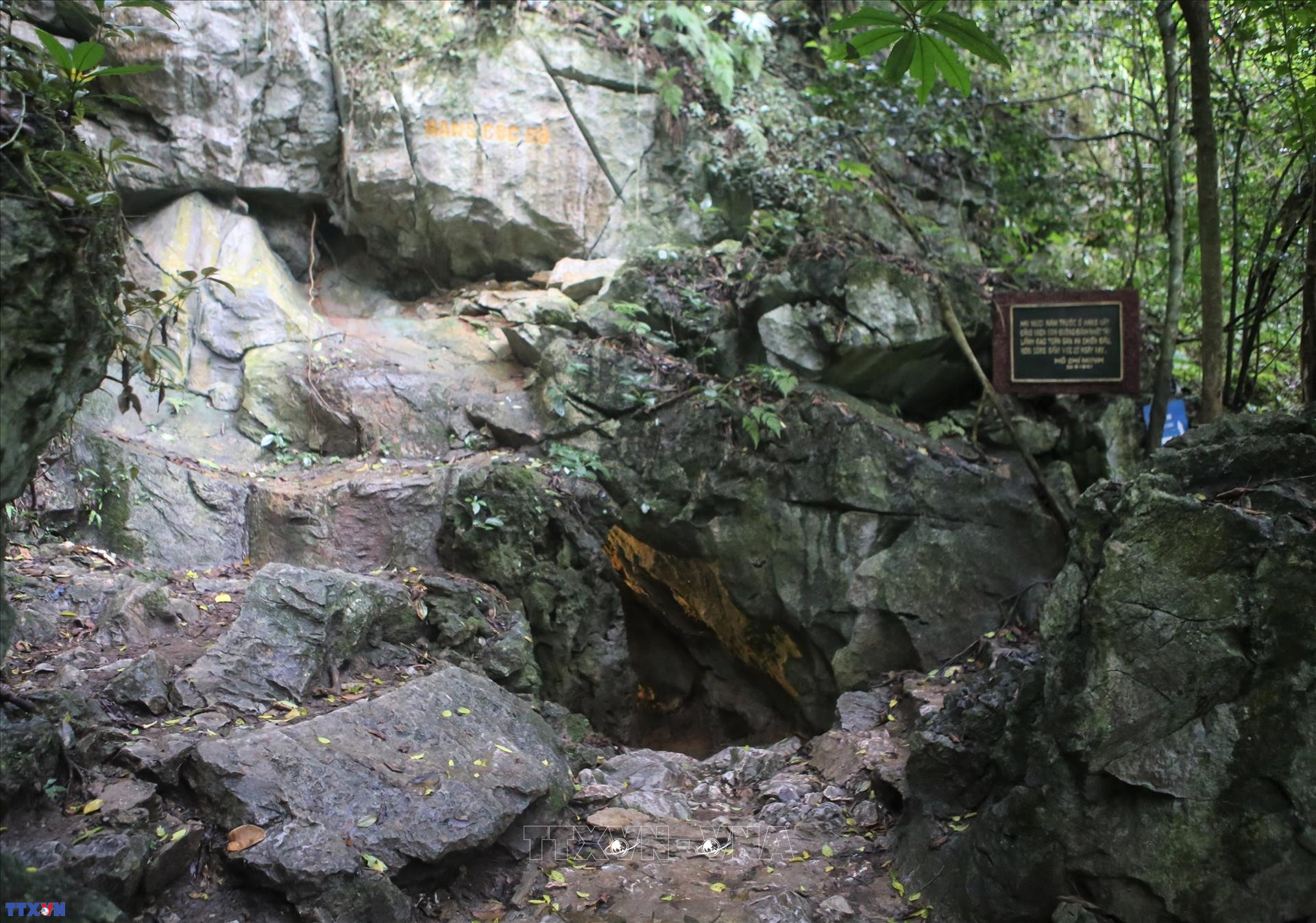
Exploring Pac Bo Cave: A revolutionary heritage amidst Cao Bang Mountains
06 Sep, 2025
Deep within the rugged mountains of Cao Bang Province lies Pac Bo Cave, a site that carries profound historical significance for Vietnam while also offering breathtaking natural beauty. Surrounded by limestone peaks, lush forests, and crystal-clear streams, Pac Bo is more than just a cave—it is a sacred landmark where President Ho Chi Minh lived and worked after returning to Vietnam in 1941, laying the foundation for the country’s independence movement. Today, this destination stands as both a revolutionary heritage site and an inviting travel experience for those who seek to connect with Vietnam’s history and its pristine landscapes. The Historical Importance of Pac Bo Pac Bo Cave, which means “the source” in the local Tay language, truly lives up to its name. In February 1941, after three decades abroad, President Ho Chi Minh returned to his homeland and chose this remote cave as his base of operations. For weeks, he lived in simplicity—sleeping on bamboo mats, cooking with firewood, and working tirelessly by the light of oil lamps. It was here that he translated important Marxist texts, organized revolutionary plans, and nurtured the early strategies that would eventually lead to Vietnam’s declaration of independence in 1945. Every rock, stream, and tree in this area has since become a witness to those critical moments in history, making Pac Bo a living museum of Vietnam’s path to freedom. Today, visitors can still see the modest bamboo bed, stone table, and simple belongings that President Ho Chi Minh used during his time in the cave. These artifacts remind us that great revolutions often begin in the most humble of places. Lenin Stream and Karl Marx Mountain One of the most iconic images of Pac Bo is Lenin Stream, a clear turquoise river that flows gently past the cave. Its water is so pure that pebbles at the bottom shimmer like jewels under the sunlight. President Ho Chi Minh often sat by this stream to read, write, or fish for food. To this day, the stream remains a symbol of simplicity and resilience, drawing countless visitors who wish to walk along its banks and reflect on history. Opposite the stream stands Karl Marx Mountain, a limestone peak named by President Ho Chi Minh to honor the great philosopher whose teachings deeply influenced his revolutionary path. Together, Lenin Stream and Karl Marx Mountain form a natural yet symbolic setting, highlighting the ideological foundation upon which Vietnam’s independence was built. The Natural Beauty of Pac Bo Beyond its historical value, Pac Bo is a site of exceptional natural beauty. The entire area is nestled within Cao Bang’s limestone karst landscape, which has earned UNESCO recognition as part of the Non Nuoc Cao Bang Geopark. The karsts rise dramatically against the horizon, their cliffs softened by lush vegetation. During spring and summer, wildflowers bloom along the riverbanks, while autumn brings a golden glow to the terraced fields surrounding the villages. The cave itself, though small and modest, opens into a cool interior that provides shelter from the heat. Visitors can walk inside and imagine the days when this hidden space served as the nerve center of Vietnam’s revolution. Just outside, the gentle murmur of Lenin Stream and the songs of birds in the forest create an atmosphere of peace and contemplation. Local Culture and Community Pac Bo is located in a region predominantly inhabited by ethnic groups such as the Tay and Nung. Their villages, with traditional stilt houses and warm hospitality, add another layer of charm to the journey. Travelers who spend time here can experience authentic rural life—sharing meals of sticky rice, smoked pork, and local herbs, or watching traditional weaving and folk singing. These communities played a crucial role during the revolutionary years, offering shelter, food, and support to those fighting for independence. Visiting them today is not just about cultural immersion but also about paying tribute to the generations who silently contributed to the nation’s struggle. Traveling to Pac Bo – A Journey through Scenic Routes Reaching Pac Bo Cave is an adventure in itself. The site is located about 55 kilometers from Cao Bang City, and the drive takes travelers through winding mountain roads, green valleys, and picturesque villages. The journey offers countless opportunities for photography: farmers working in rice paddies, children cycling along village paths, and majestic mountains stretching endlessly across the skyline. Many visitors choose to combine their trip to Pac Bo with other famous destinations in Cao Bang, such as Ban Gioc Waterfall, one of the most beautiful waterfalls in Asia, and Nguom Ngao Cave, a vast limestone cavern filled with spectacular stalactites. Together, these sites showcase the diversity of Cao Bang as both a natural paradise and a historical heartland. Tips for Visitors To make the most of your journey to Pac Bo Cave, here are some practical tips: Best time to visit: From October to April, when the weather is dry and pleasant. Spring is especially beautiful with blooming flowers and fresh greenery. Transportation: From Hanoi, travelers can take an overnight bus to Cao Bang City, then hire a car or motorbike to reach Pac Bo. Guided tours are also available for those who prefer organized trips. What to bring: Comfortable walking shoes, water, light snacks, and a camera. If visiting villages, consider bringing small gifts for children or contributing to local crafts. Respect local customs: Dress modestly, ask before taking photos of villagers, and be mindful of the sacred significance of historical sites. What sets Pac Bo apart from other destinations is the way it seamlessly combines history, culture, and natural Vietnam. Standing inside the cave, it is impossible not to feel a sense of reverence for the struggles endured here. Walking along Lenin Stream, you understand why President Ho Chi Minh found both solace and strength in this place. Meeting local villagers, you realize that the spirit of resilience and simplicity still lives on in the people of Cao Bang. For travelers seeking more than just sightseeing, Pac Bo Cave offers a profound experience. It is a destination where every corner tells a story, where nature and history converge, and where visitors can reflect on the sacrifices that shaped Vietnam’s future. Whether you are a history enthusiast tracing the footsteps of a great leader, a nature lover enchanted by karst landscapes, or a cultural explorer curious about ethnic traditions, Pac Bo welcomes you with its unique blend of heritage and beauty. In the quiet flow of Lenin Stream and the shadow of Karl Marx Mountain, you will find not only a memory of the past but also inspiration for the journey ahead.
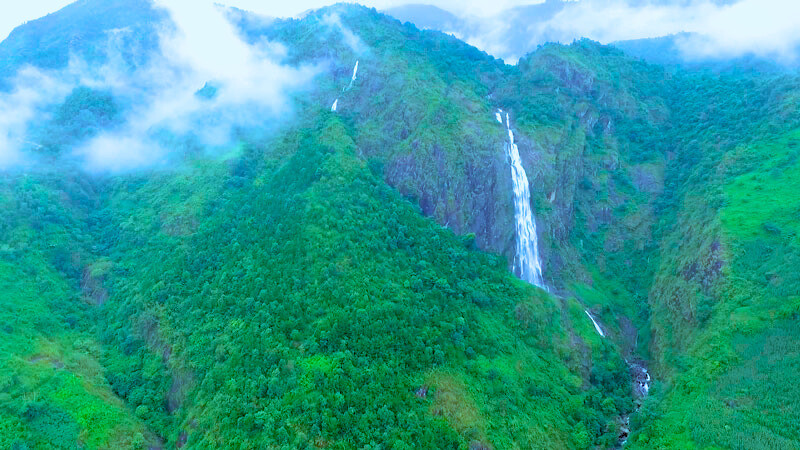
Immerse in the Northwest Nature at Tac Tinh Waterfall
06 Sep, 2025
Gateway to Northwest Beauty The Northwest of Vietnam has long been known for its untamed landscapes, misty mountains, and rich ethnic traditions. Among its hidden treasures, Tac Tinh Waterfall (Thác Tác Tình) in Lai Chau stands out as a place where nature and legend harmonize to create a destination that is both breathtakingly beautiful and deeply meaningful. Located about 30 kilometers from Lai Chau City, this waterfall is often described as one of the province’s most captivating natural attractions—yet it remains pleasantly untouched by mass tourism, making it a sanctuary for those who seek tranquility and authenticity. The Legend of Love and Sorrow What makes Tac Tinh more than just a waterfall is its moving legend. Locals tell the tale of a young man from the Dao ethnic group who fell deeply in love with a graceful girl from the Giay community. Bound by cultural traditions and family opposition, their love was forbidden. In her grief, the young girl is said to have thrown herself into the cascade, and her spirit merged with the rushing waters. From then on, the waterfall was called Tac Tinh, which translates to “Love Waterfall,” a name that forever preserves the memory of their tragic yet enduring love. For visitors, this story adds a layer of emotion to the scenery. The sound of the falling water seems to echo the pain of separation while also symbolizing eternal devotion—an inseparable part of the waterfall’s identity. A Natural Masterpiece Tac Tinh Waterfall drops from a height of around 130 meters, cascading down like a silver ribbon against the deep green backdrop of the mountain. The water splits into streams that crash into the rocky cliffs below, creating misty veils that sparkle in the sunlight. At the base lies a crystal-clear pool, where the water is cool enough to instantly refresh anyone who dips their hands or feet. The journey to the waterfall is as enchanting as the destination itself. Visitors pass through narrow mountain roads lined with terraced rice fields, bamboo groves, and traditional stilt houses, each turn revealing a glimpse of the Northwest’s grandeur. As you approach the waterfall, the sound of rushing water grows louder, blending with the calls of forest birds and the rustling of leaves in the breeze. The surrounding landscape is equally captivating. Wild orchids cling to mossy rocks, ferns thrive in the damp air, and butterflies dance above the water’s edge. For photographers, Tac Tinh is a natural canvas that shifts with the light of day—from golden sunrise to soft afternoon glow and mystical twilight. An Escape into Peace and Simplicity Unlike more famous waterfalls in Sapa or Cao Bang, Tac Tinh remains peaceful and unspoiled. This is a place where travelers can take their time, sit quietly by the water, and let the cool mist wash away the noise of daily life. The calmness of the area makes it an ideal retreat for those who wish to meditate, write, or simply reconnect with themselves. Visiting Tac Tinh is not just about seeing—it is about feeling. The distant laughter of children from nearby villages, the earthy scent of the forest, and the rhythmic roar of the waterfall together create a sensory experience that stays with you long after you leave. A Blend of Nature and Culture Beyond the waterfall, the villages of the Dao and Giay ethnic groups offer opportunities to experience the cultural richness of Lai Chau. Visitors can observe traditional weaving, taste local specialties like "thắng cố" (a traditional horse meat soup) or sticky rice dyed with natural colors, and listen to folk songs passed down through generations. The warmth and hospitality of the locals often turn a short trip into lasting memories. Staying in a homestay near the waterfall provides a deeper experience, where evenings are spent by the fire listening to legends, sharing tea, and enjoying the unique rhythm of life in the highlands. Here, the connection between nature and people becomes clear: the waterfall is not just scenery, but part of a living culture. Practical Tips for Travelers Best time to visit: March to May (spring) and September to November (autumn) are ideal, with pleasant weather, lush greenery, and the waterfall at its most graceful. The rainy season (June–August) makes the waterfall more powerful but can make roads slippery. Getting there: From Lai Chau City, it’s a scenic 30 km journey by car or motorbike. The winding roads are narrow but reward travelers with sweeping mountain views. Entrance fee: A small ticket fee is collected, which supports the preservation of the site. What to bring: Comfortable shoes for walking, light snacks, water, and a good camera. A light jacket is recommended as temperatures in the mountains can drop quickly, especially in the late afternoon. Local etiquette: Be respectful when visiting villages nearby—ask before taking photos, and try sampling local dishes to support the community. Why Tac Tinh Waterfall Should Be on Your Itinerary Tac Tinh Waterfall is not as famous as Ban Gioc or Silver Waterfall, but its charm lies in its intimacy and authenticity. It is a place where travelers can step away from crowded tourist trails, discover untouched natural beauty, and immerse themselves in the soulful stories of the Northwest. Here, every element—from the powerful cascade and verdant forests to the heartfelt legend and welcoming people—creates a holistic experience that captures the spirit of Vietnam’s highlands. To visit Tac Tinh Waterfall is to immerse yourself in a world where nature, legend, and culture intertwine. It is not just a destination to admire, but a place to feel deeply—whether it is the cool spray of the water, the weight of a timeless love story, or the peace of a simple village life. For those who seek not only sights but also soulful experiences, Tac Tinh Waterfall is a reminder that the most meaningful journeys are found in places where beauty is both seen and felt.
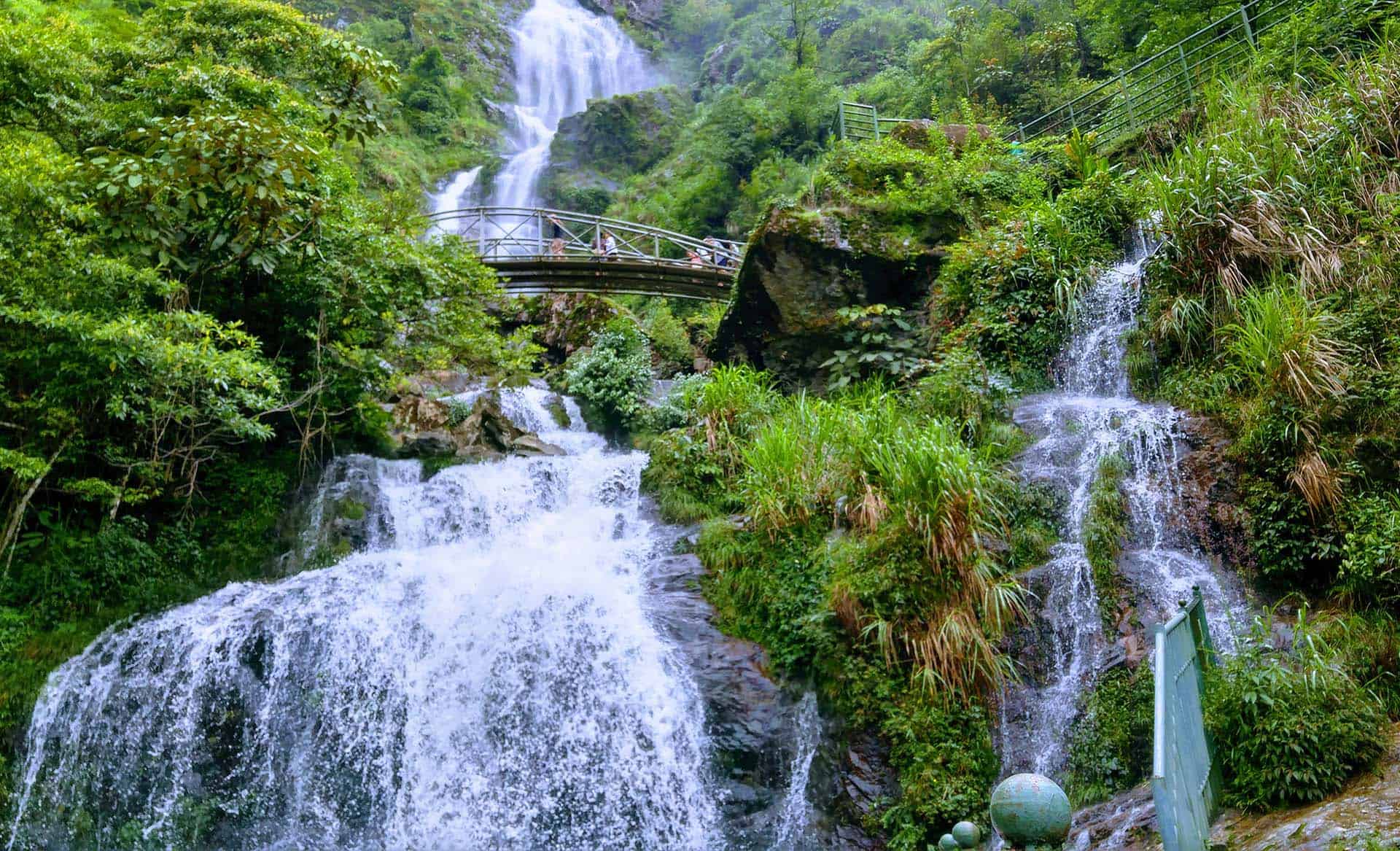
Silver Waterfall Sapa – Majestic beauty in the Northwest Mountains
06 Sep, 2025
A Natural Wonder on the Way to Heaven’s Gate Located about 12 kilometers from Sapa town along the road to Lai Chau, Silver Waterfall (Thác Bạc) is one of the most iconic natural attractions in the Northwest of Vietnam. Surrounded by towering mountains and lush pine forests, the waterfall is a breathtaking sight where nature displays its raw power and elegance. With water cascading down from a height of over 200 meters, Silver Waterfall lives up to its name, sparkling like liquid silver under the sunlight. For travelers making their way to Tram Ton Pass and the legendary Heaven’s Gate, Silver Waterfall is a perfect stop, offering both scenic beauty and a refreshing escape from the bustle of Sapa town. The Majestic Charm of Silver Waterfall The waterfall originates from the streams high up on Fansipan Mountain, the “Roof of Indochina.” Its water gushes down steep cliffs, creating white foam and a roaring sound that echoes through the valley. During summer, when the water flow is strongest, the cascade is at its most impressive—powerful yet graceful, painting a mesmerizing picture of natural grandeur. In winter, mist often surrounds the waterfall, blending with the sound of rushing water to create a mystical, dreamlike atmosphere. Visitors standing nearby can feel the cool spray on their skin, a refreshing contrast to the trek uphill. From the base of the waterfall, travelers can climb a stone stairway to reach higher viewpoints. From there, the panorama of mountains, valleys, and forests unfolds magnificently, offering plenty of photo opportunities for nature lovers. A Perfect Escape for Nature Enthusiasts Silver Waterfall (Thác Bạc) is far more than a scenic spot—it is a sanctuary for those seeking to reconnect with nature. Nestled amidst towering mountains and lush pine forests, the waterfall offers visitors a rare opportunity to immerse themselves in a pristine, tranquil environment. The moment one approaches, the air grows cooler and fresher, carrying the subtle scent of damp earth and pine needles. The constant roar of cascading water, harmonizing with the gentle calls of forest birds, creates a natural symphony that soothes the mind and invigorates the senses. Walking along the stone paths and viewing platforms, visitors can pause to absorb the scenery, taking in the vibrant greens of the surrounding vegetation, the crystal-clear spray of the waterfall, and the rhythmic flow of water over rocks. The experience is often described as both energizing and calming—a perfect balance between nature’s raw power and its serene beauty. For many, it becomes a meditative moment, a chance to breathe deeply, reflect, and rejuvenate both body and spirit. The area surrounding Silver Waterfall is also a hotspot of biodiversity, making it a paradise for eco-tourists and wildlife enthusiasts. Dense forests at high altitudes are home to a variety of native flora, including ferns, wildflowers, and coniferous trees, which create a rich, layered canopy over the valleys. The foliage not only adds to the visual beauty but also provides shelter for numerous bird species, from brightly colored songbirds to elusive forest dwellers. Birdwatchers may spot the flutter of wings or hear melodic calls echoing through the mountains, adding another dimension of wonder to the visit. For those with an interest in ecology or nature photography, the combination of mist, sunlight, and flowing water presents endless opportunities to capture stunning, dynamic landscapes. Hikers and nature lovers can explore nearby trails, discovering hidden viewpoints, smaller streams, and secluded patches of forest, each offering a unique perspective on the region’s natural charm. Practical Tips for Visiting Silver Waterfall Best time to visit: March to May (spring) and September to November (autumn), when the weather is mild and the scenery is at its best. In the rainy season, the waterfall is strongest, but the path may be slippery. How to get there: Located about 30 minutes by motorbike or car from Sapa town along National Highway 4D toward Lai Chau. Entrance fee: A small fee is required, which contributes to local conservation efforts. What to bring: Comfortable shoes, a light jacket (it can be cool at high altitudes), and a camera to capture the stunning views. Silver Waterfall Sapa is a natural gem that showcases the majestic charm of the Northwest mountains. Whether you stop by on your way to Tram Ton Pass or make it a highlight of your Sapa journey, the waterfall promises unforgettable moments with its raw beauty and serene atmosphere. For those seeking both awe-inspiring scenery and a refreshing escape, Silver Waterfall is truly a must-visit destination in the highlands of Vietnam.
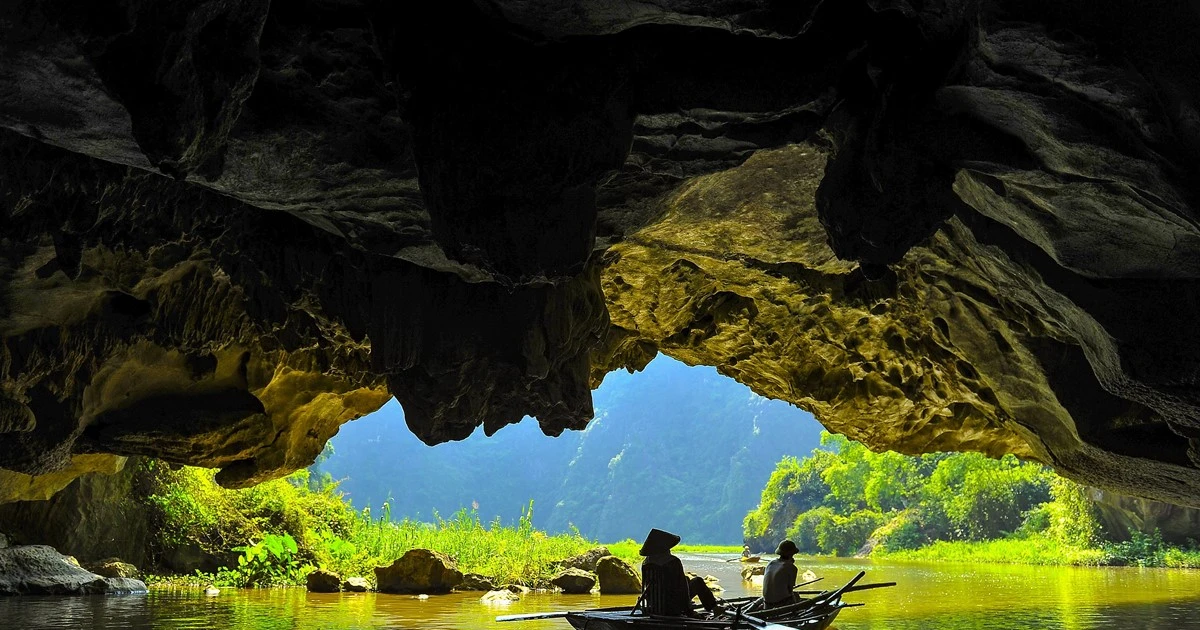
Experience Tam Coc and Bich Dong Floating through hidden caves
06 Sep, 2025
A Gateway to the Natural Wonders of Ninh Binh Located just a two-hour drive from Hanoi, Ninh Binh has earned its reputation as the “hidden gem” of Northern Vietnam. Known for its towering limestone mountains, vast emerald rice fields, and meandering rivers, the region offers a landscape that is at once majestic, serene, and timeless. Unlike the bustling streets of the capital, Ninh Binh invites travelers to slow down, breathe deeply, and immerse themselves in the subtle beauty of rural Vietnam. At the heart of this enchanting region lies Tam Coc – Bich Dong, a destination often described as a living watercolor painting. Here, nature, culture, and history merge seamlessly, creating an experience that is both visually stunning and culturally enriching. The area’s karst limestone formations rise dramatically from the gentle waters of the Ngo Dong River, evoking images of Halong Bay on land. These towering cliffs, sculpted over millennia, reflect in the calm river waters, creating mirror-like scenes that seem almost surreal, especially in the soft light of early morning or late afternoon. Drifting Along the Tam Coc River The highlight of Tam Coc is a peaceful boat ride along the Ngo Dong River. Local women skillfully row small wooden sampans, sometimes even with their feet—a unique technique that fascinates visitors. As the boat glides along the emerald water, travelers are treated to stunning scenery: rice paddies stretching on both sides of the river, changing colors with the seasons—lush green in summer, golden yellow during harvest, and earthy brown in winter. Towering limestone mountains cast their reflections on the calm surface, making the entire journey feel like a passage into a mythical realm. The name “Tam Coc” means “Three Caves,” referring to the three natural caves that the boat passes through: Hang Ca, Hang Hai, and Hang Ba. Each cave has its own charm—Hang Ca is the largest, with shimmering stalactites hanging from its ceiling; Hang Hai is smaller but filled with mystical light streaming through narrow openings; Hang Ba, though low, offers an intimate, peaceful atmosphere. Inside the caves, the sound of paddles striking the water echoes softly, adding to the sense of mystery and wonder. Exploring Bich Dong Pagoda After the river journey, the adventure continues to Bich Dong Pagoda, a historic complex built into the limestone mountain in the 15th century. Blending spirituality with natural surroundings, the pagoda is reached by climbing mossy stone steps winding up the mountainside. The complex consists of three tiers: Ha Pagoda (Lower) at the base, Trung Pagoda (Middle) halfway up, and Thuong Pagoda (Upper) at the summit. Each level offers a distinct spiritual atmosphere, from the simplicity of the lower temple to the solemn serenity of the upper shrine. From the top, sweeping panoramic views reveal rice fields, rivers, and karst peaks stretching into the horizon, creating a breathtaking scene that feels both sacred and timeless. Bich Dong is not just a place of worship but also a sanctuary for reflection and connection—with nature, with history, and with one’s inner self. Many visitors find a sense of peace here, a welcome pause from the rush of modern life. The Rhythm of Local Life What truly sets Tam Coc – Bich Dong apart from other scenic destinations is the chance to immerse oneself in the authentic rhythm of rural life. As visitors glide gently along the emerald waters of the Ngo Dong River, the surrounding landscape comes alive with scenes of daily life that have remained largely unchanged for generations. On the riverbanks, farmers diligently tend to their rice paddies, bending over the earth with practiced ease. During planting or harvesting season, their movements form a harmonious choreography, synchronized with the natural flow of the fields. Fishermen cast their nets, skillfully navigating the river’s currents, while children play by the water’s edge, laughing and splashing with carefree delight. Occasionally, small wooden boats laden with vegetables, fruits, or firewood drift past, guided by villagers on their daily errands. The village markets along the way offer another window into local life. Here, the air is filled with the aromas of fresh produce, homemade snacks, and incense from nearby temples. Villagers engage in animated conversations, bartering goods with warmth and familiarity. Every interaction is a glimpse into the community spirit that defines life in this part of Ninh Binh. Traveling by boat allows visitors to experience these moments at an unhurried pace. The limestone cliffs reflect perfectly on the river’s calm surface, creating a mirror-like image that doubles the beauty of the surroundings. The soundscape is equally captivating: the rhythmic splash of oars against the water, the occasional call of a bird from the forested cliffs, and the laughter of children echoing across the paddies. These subtle, harmonious sounds blend seamlessly with the natural environment, giving travelers a profound sense of serenity and connection with the land. Tips for Visiting Tam Coc and Bich Dong Best time to visit: Late May to early June, when golden rice fields glow under the sun. Spring and autumn also offer pleasant weather. What to bring: Sunscreen, a wide-brimmed hat, water, and a camera to capture the scenery. Boat rides: Last about 2 hours; tickets are available at Tam Coc wharf. Cycling option: Renting a bicycle is a great way to explore nearby villages, rice paddies, and quiet backroads. Tam Coc and Bich Dong are more than just beautiful sights—they are an invitation to float through hidden caves, step into history, and connect with authentic Vietnamese culture. From mysterious caves and moss-covered pagodas to the simple rhythms of daily life, every moment here feels timeless. This destination lingers in the heart of travelers not only for its breathtaking scenery but also for the peace, reflection, and sense of belonging it inspires.
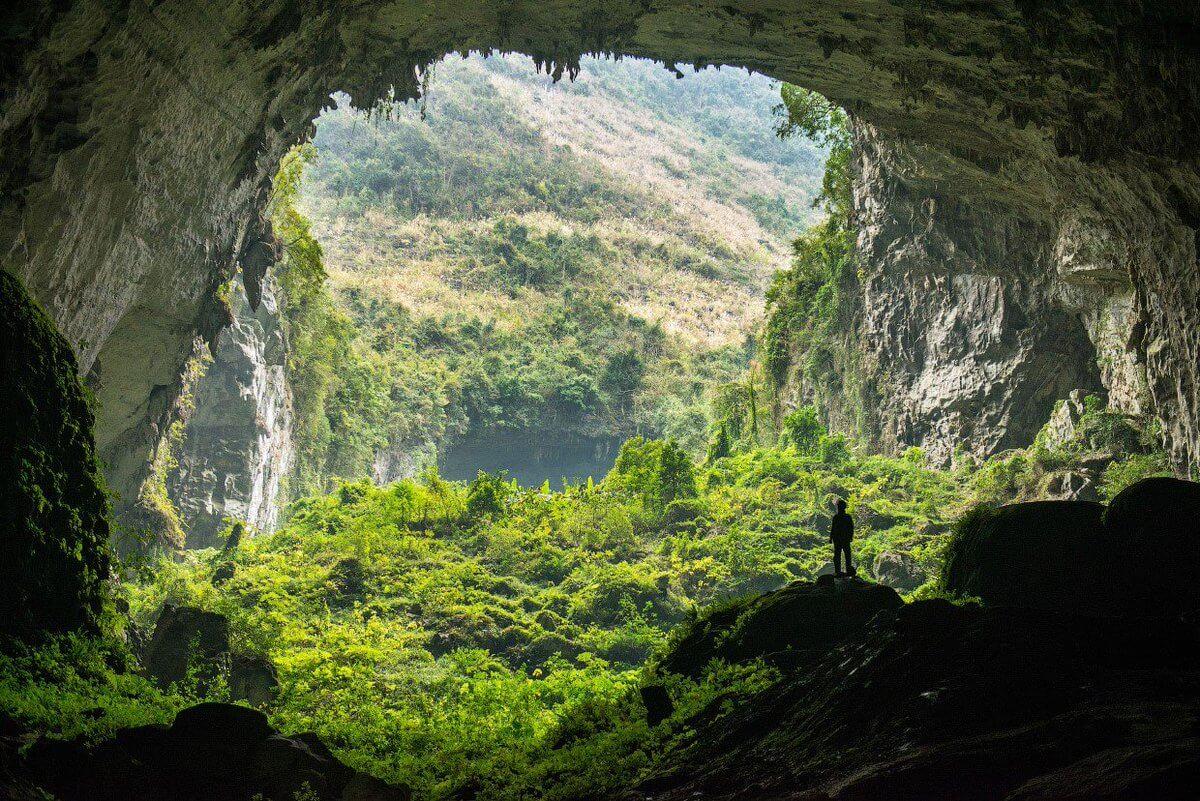
Lost in the World’s Largest Cave – Son Doong
06 Sep, 2025
A Monument of Nature Son Doong’s sheer scale is nothing short of awe-inspiring. Measuring over 200 meters in height, 150 meters in width, and stretching more than 9 kilometers long, this colossal cave could easily accommodate an entire New York City block inside its chambers. The cave’s formation dates back over 2.5 million years, sculpted by underground rivers gradually eroding the limestone. The result is a network of colossal halls, narrow passageways, and hidden chambers that feel more like stepping onto an alien planet than exploring anywhere on Earth. Walking through Son Doong, visitors immediately sense the immensity of its cathedral-like spaces. The ceiling soars high above, with stalactites and stalagmites forming intricate natural sculptures. Some stalagmites reach up to 80 meters, towering like ancient stone guardians. In several chambers, the cave roof has collapsed, allowing shafts of sunlight to pierce through and illuminate vibrant patches of greenery. This natural light gives life to mosses, ferns, and even small trees, creating an underground jungle that contrasts dramatically with the dark, cool limestone walls. The interplay of light and shadow transforms each chamber into a living, breathing work of art, where every corner seems to reveal a new wonder. The Underground World of Son Doong Son Doong is not only immense but also teeming with its own unique ecosystem. The constant interaction between warm and cool air creates fog and mist inside the cave, producing an ethereal, almost mystical atmosphere. Rivers quietly wind through the darkness, reflecting the faint light and adding a gentle murmur that enhances the sense of solitude and mystery. The areas where sunlight penetrates through collapsed ceilings become pockets of life, with rare plants and ferns thriving in unexpected corners. These sinkholes resemble natural skylights, each offering a glimpse of life flourishing in an otherwise subterranean world. The cave also holds geological marvels that capture the imagination of any explorer. One of the most iconic features is the so-called “Great Wall of Vietnam,” a 90-meter-high stalagmite that rises dramatically in the middle of the cave. Trekkers must navigate around or over this natural monument, a challenge that underscores both the power of nature and the human determination to conquer it. In other chambers, delicate formations shimmer in the filtered sunlight, while crystal-clear underground rivers mirror the ceiling above, creating surreal, almost mirrored landscapes. Beyond its physical beauty, Son Doong evokes a sense of timelessness. The scale, silence, and occasional sound of dripping water immerse visitors in an environment that feels ancient and untouched. Each step reveals layers of geological history, with rock formations and sediment patterns telling stories millions of years old. The combination of light, shadow, greenery, and the monumental scale creates an experience that is both humbling and exhilarating—a reminder of the extraordinary forces that shaped our planet and the fragile beauty that remains hidden beneath its surface. An Adventure Like No Other Exploring Son Doong is not a simple trip—it is an expedition. The journey typically lasts 4 days and 3 nights, involving jungle trekking, river crossings, and camping inside the cave itself. Trekkers sleep in designated campsites set against dramatic backdrops of colossal rock formations and underground rivers, often accompanied by the echoes of dripping water and distant winds. Every day on the expedition feels surreal: waking up to mist rising inside the cave, crossing subterranean rivers, and gazing at skylights that open up to patches of forest. The adventure requires physical stamina, but the reward is an unparalleled experience that few places on Earth can offer. Beyond the cave itself, the journey to Son Doong also allows travelers to connect with the local communities of Quang Binh. The adventure begins in Phong Nha, a small village where tourism and conservation coexist. Meeting local people, tasting regional cuisine, and hearing stories about the discovery of Son Doong add a cultural depth, while the breathtaking landscapes and unique formations showcase the unparalleled Vietnam nature that makes this expedition truly unforgettable. Tips for Exploring Son Doong Best time to visit: February to August, when the weather is dry and safe for trekking. Physical preparation: The trek requires good fitness; regular hiking and endurance training are recommended. Booking in advance: Only a limited number of permits are issued each year, making early booking essential. Gear: While safety equipment and support are provided, trekkers should bring personal items such as hiking boots, lightweight clothing, and insect repellent. Son Doong is more than just the world’s largest cave—it is a journey into the unknown, a reminder of how small humans are compared to nature’s grandeur. For those who dream of venturing beyond the ordinary, Son Doong offers an adventure that is both humbling and transformative. To step inside its massive chambers is to be lost, not in confusion, but in awe and wonder at one of the greatest treasures of our planet.

Embark on the trekking route to Ngoc Linh
06 Sep, 2025
Conquering Challenges in the Great Forest Trekking to the summit of Ngoc Linh is not for the faint-hearted. Rising to more than 2,598 meters, the trekking route to Ngoc Linh demands determination, endurance, and a spirit of adventure. Trails snake steeply upward, often muddy and slippery after rains, with sections of rugged terrain where trekkers must cling to roots and rocks for support. At times, the journey feels exhausting—but it is precisely this sense of challenge that makes every step meaningful. Each stage of the trek reveals a new face of the mountain and the majestic nature of Vietnam. The lower slopes are dotted with terraced fields and scattered ethnic villages, where farmers tend their crops under the morning sun. Deeper into the forest, the landscape transforms into towering trees, thick canopies, and cool mountain air scented with wild orchids and forest herbs. Hidden waterfalls tumble into clear streams, providing natural resting points for trekkers to refresh and reflect. As the trail climbs higher, clouds roll in, wrapping the mountain in shifting veils of mist, making the world feel dreamlike and otherworldly. At the summit, the reward is more than a view—it is the feeling of standing at the edge of the sky. The panorama stretches endlessly: layers of green ridges fading into the horizon, valleys blanketed with white clouds, and the Central Highlands opening below like a vast, untouched canvas. Few experiences compare to watching the sunrise here, as the first light spills across the peaks, painting the mountain in shades of gold and pink. Ngoc Linh – A Cradle of Culture and Tradition Ngoc Linh is not just a mountain; it is a sacred symbol in the lives of local ethnic communities such as the Xe Dang and Ba Na. For generations, they have revered it as a guardian spirit, tied closely to their myths, rituals, and identity. Trekking through the region offers more than natural beauty—it opens a door to centuries-old traditions still thriving in these highlands. On the way, trekkers may stop at stilt-house villages, where the warmth of local hospitality shines through simple but genuine gestures: a smile, a shared meal, or a cup of corn wine offered by the fire. Visitors can witness age-old crafts, such as weaving and wood carving, or hear traditional songs that echo the rhythm of life in the mountains. These encounters leave lasting impressions, reminding travelers that Ngoc Linh is as much about people as it is about peaks. Adding to its cultural richness, Ngoc Linh is also home to the legendary Ngoc Linh ginseng, Vietnam’s most precious medicinal plant. Known as a “national treasure,” this rare ginseng thrives only in the high-altitude forests here. Visiting the carefully protected ginseng gardens along the trek not only enriches the journey but also reveals the deep connection between nature and human livelihood in this remote corner of the Central Highlands. A Trekking Journey Full of Experiences Trekking Ngoc Linh can be tailored to different levels of adventure. Most journeys range from 2 days 1 night to 3 days 2 nights, with routes often starting in Kon Tum Ko Tu village or the Mang Ri commune of Tu Mo Rong district. Trekkers cross bamboo bridges over streams, climb steep jungle trails, and set up camp in the heart of the forest. Nights are spent either under the stars or in rustic village homestays, where travelers gather around fire pits, sharing stories and enjoying traditional dishes cooked from local ingredients. This is not just a physical challenge but also a journey of camaraderie and personal growth. The moments of pushing through steep ascents, preparing a simple forest meal with your trekking team, or standing side by side to watch the dawn unfold on the “roof of Kon Tum” forge memories that endure long after the hike ends. For many, the trek becomes a symbol of resilience, reminding them of their own strength and connection to nature. Tips for Trekking Ngoc Linh Best time to visit: From December to April, when the weather is dry, skies are clearer, and trails are safer. The rainy season can make paths dangerously slippery. Physical preparation: The trek is demanding, so build endurance with hiking, running, or stair training beforehand. Good stamina makes the experience more enjoyable. Essential gear: Quality trekking shoes with strong grip, warm layered clothing for chilly nights, rain protection, a tent and sleeping bag for camping, personal first-aid supplies, and sufficient water. Don’t forget insect repellent for forest areas. Local guide: Always trek with a local guide. They not only ensure safety and navigation but also share cultural insights, legends of Ngoc Linh, and access to places off the beaten path. Exploring the trekking route to Ngoc Linh is more than a mountain climb—it is a profound journey into the wilderness and culture of Vietnam’s Central Highlands. It challenges your body, strengthens your spirit, and connects you with both nature’s grandeur and the traditions of the people who call these mountains home. For those seeking an adventure that is both physically rewarding and deeply meaningful, Ngoc Linh stands tall as a peak worth conquering and remembering forever.
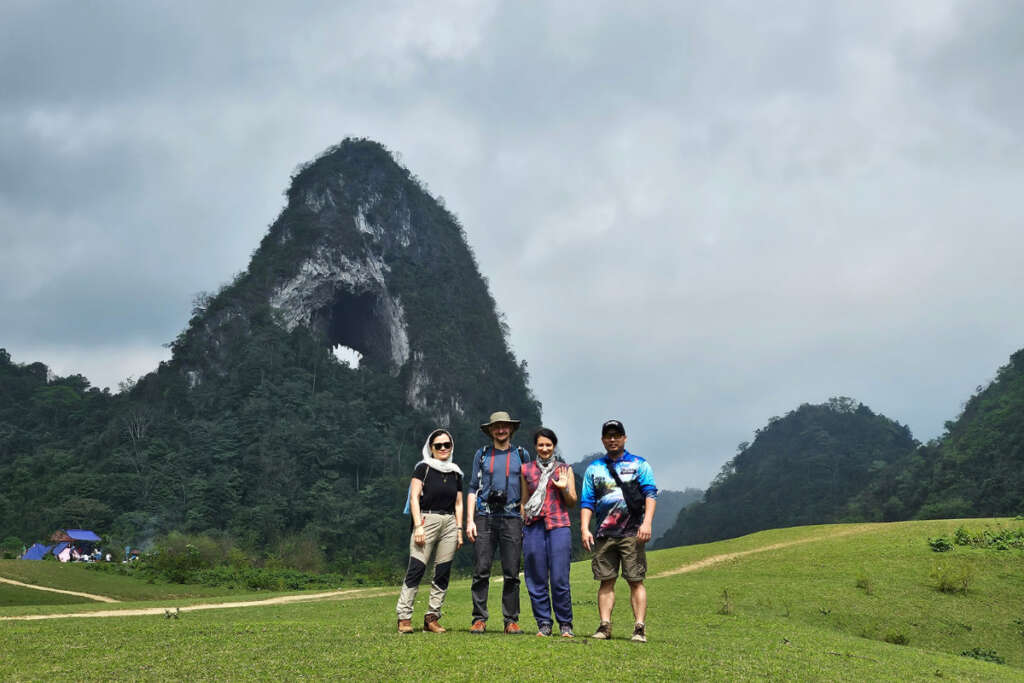
Venture into the untouched trekking paths of Cao Bang Province
06 Sep, 2025
A Land of Dramatic Scenery The first thing that strikes visitors about Cao Bang is its breathtaking scenery. The trekking paths of Cao Bang Province wind through lush valleys, rolling limestone mountains, and serene rivers, painting a picture of Vietnam’s unspoiled wilderness. Along the way, trekkers often pass by rice terraces that shimmer in different shades depending on the season—bright green in summer, golden yellow during harvest, and misty gray in winter. The landscapes feel untouched by mass tourism, making every step an invitation to slow down and immerse yourself in nature. One of the highlights of trekking in Cao Bang is reaching Ban Gioc Waterfall, one of the largest and most beautiful waterfalls in Southeast Asia. Surrounded by dense forests and towering cliffs, the waterfall cascades dramatically over multiple tiers, creating a breathtaking backdrop that feels almost otherworldly. For trekkers, the journey to Ban Gioc is as rewarding as the destination itself, as it passes through winding trails and peaceful villages. Cultural Encounters Along the Trails Cao Bang is not only about nature—it is also home to diverse ethnic minority communities, including the Tay, Nung, H’Mong, and Dao people. Trekking through the province often means encountering daily life in traditional stilt houses, hearing folk songs, or even sharing a cup of corn wine with locals. Many villages welcome travelers for homestay experiences, where you can taste homemade dishes, learn about traditional crafts, and listen to stories passed down through generations. These cultural exchanges add depth to the trekking journey, making it more than just a physical adventure. Unlike Sapa or Ha Giang, where trekking routes are now bustling with tourists, Cao Bang’s trails remain quiet and tranquil. This sense of untouched beauty appeals to those who seek solitude and authenticity. The paths vary in difficulty, from gentle walks along riversides to more challenging hikes through mountain passes, giving both casual travelers and seasoned trekkers plenty of options. Along the way, you’ll likely encounter more buffaloes and farmers than fellow tourists, reinforcing the sense of stepping into a world apart. What makes Cao Bang’s trekking unique is its quiet and unspoiled atmosphere. While popular destinations like Ha Giang and Sapa now see heavy tourist traffic, Cao Bang’s routes remain tranquil. Trekkers often find themselves alone with nature, sharing the trail with grazing buffaloes or farmers carrying bamboo baskets rather than crowds of tourists. The diversity of trekking routes caters to different preferences: Short treks (2–3 hours): Perfect for beginners, these trails wind through valleys and riversides, often leading to caves or small waterfalls. Moderate treks (half-day to full-day): These routes involve more elevation, taking hikers across forested hills or terraced mountainsides. Multi-day treks: For the adventurous, Cao Bang offers extended journeys connecting Ban Gioc, Pac Bo (where President Ho Chi Minh once lived), and remote ethnic villages. These treks provide a deep dive into both nature and history. Practical Tips for Trekking in Cao Bang Best time to visit: The ideal trekking seasons are from September to November and March to May, when the weather is cool and pleasant. Autumn is especially beautiful with golden rice fields and clear skies. What to pack: Comfortable hiking shoes are essential, as trails can be rocky and slippery. Bring a light jacket, rain protection, sunscreen, and plenty of water. Hiring a guide: A local guide can not only help you navigate lesser-known paths but also introduce you to villages and explain the cultural significance of the region. Homestay experience: Don’t miss the chance to spend a night in a traditional homestay, which offers both comfort and a deeper understanding of local life. Exploring the untouched trekking paths of Cao Bang Province is more than just an outdoor adventure—it is a journey into the heart of Vietnam’s natural and cultural heritage. With its unspoiled landscapes, welcoming communities, and serene atmosphere, Cao Bang offers a rare escape from crowded tourist spots. For those in search of authenticity, tranquility, and unforgettable scenery, trekking in Cao Bang promises memories that will last a lifetime.
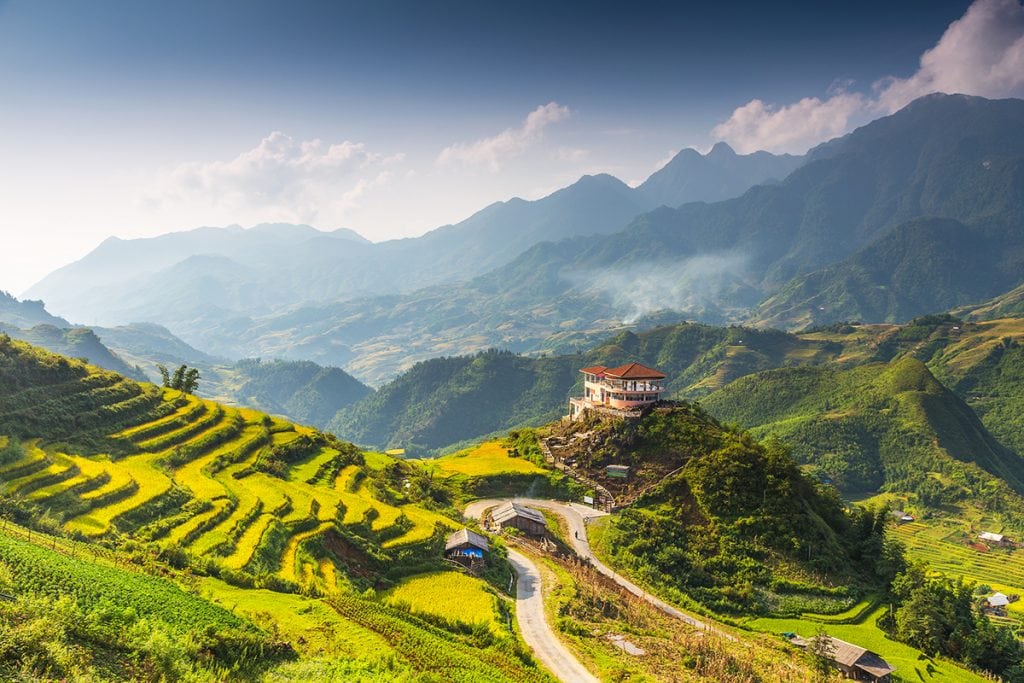
Exploring Muong Hoa Valley and hidden trails in Sapa
06 Sep, 2025
Sapa, a charming mountain town in Northern Vietnam, is world-renowned for its terraced rice fields, misty landscapes, and rich cultural heritage. Among its many treasures, Muong Hoa Valley stands out as one of the most breathtaking and rewarding destinations for hikers and adventure seekers. Beyond its scenic beauty, the valley offers a chance to discover hidden trails, encounter ethnic minority villages, and immerse yourself in authentic mountain life. About Muong Hoa Valley Located about 10 kilometers southeast of Sapa town, Muong Hoa Valley stretches along the Hoang Lien Son mountain range. It is home to some of the most spectacular terraced rice fields in the world, recognized by National Geographic and other international publications. The valley is blessed with breathtaking nature of Vietnam, where stunning landscapes are enriched by ethnic groups such as the H’Mong, Dao, Tay, and Giay, whose traditions and lifestyle add cultural depth to this remarkable destination. The valley is especially mesmerizing during the rice season: Spring (March – May): lush green fields and blooming wildflowers. Summer (June – August): rice fields turn a deep green, full of life. Autumn (September – October): golden terraced fields at harvest time, the most photogenic season. Winter (November – January): misty mornings and peaceful atmosphere, with occasional snowfall in the mountains. Aside from the rice terraces, Muong Hoa also features a stone field with mysterious ancient carvings, believed to date back thousands of years. These engravings remain an archaeological enigma and are a fascinating stop for travelers. Hidden Hiking and Trekking Trails One of the most rewarding ways to discover the beauty of Muong Hoa Valley is through trekking. The valley offers a variety of trails that suit different levels of hikers, from beginners to experienced adventurers. Each route unveils a different side of Sapa’s natural beauty and cultural richness, making trekking here a truly unforgettable journey. Sapa – Lao Chai – Ta Van Trail This is the most popular trekking route in Muong Hoa Valley, perfect for those who want to experience both nature and local culture. Starting from Sapa town, the trail winds down into the valley, revealing endless rice terraces cascading down the mountainsides. Along the way, you’ll pass through Lao Chai Village, home to the H’Mong people, and continue on to Ta Van Village, where the Giay community resides. Travelers can interact with local families, observe daily life, and enjoy the contrast between traditional wooden houses and the golden rice fields. The trek is not too difficult, making it ideal for families or first-time visitors. Giang Ta Chai Trail For those seeking a bit more adventure, the Giang Ta Chai trail provides a moderate challenge. The route takes you deeper into bamboo forests and across suspension bridges over clear mountain streams. A highlight of this trek is the chance to see stunning waterfalls hidden within the forest, offering perfect spots to rest and enjoy the scenery. Eventually, the path leads to Giang Ta Chai Village, inhabited by the Red Dao ethnic group, known for their distinctive embroidered costumes and herbal baths. Trekking here combines natural exploration with cultural immersion, making it a favorite among adventurous travelers. Su Pan Trail The Su Pan trail is less frequented by tourists, offering a more serene and authentic trekking experience. This path climbs gently up the valley, opening to panoramic views of Muong Hoa’s rice terraces stretching endlessly into the distance. Su Pan Village itself remains relatively untouched, with simple wooden houses, grazing buffalo, and locals working in the fields. It’s a place where travelers can enjoy peace, quiet, and meaningful interactions with villagers who rarely see large crowds of visitors. For those who prefer off-the-beaten-path adventures, this trail is an excellent choice. No matter which trail you choose, trekking in Muong Hoa Valley is more than just about landscapes—it’s also a journey into the heart of Sapa’s ethnic communities. Along the routes, you’ll find homestays where you can rest, enjoy traditional meals such as sticky rice, grilled pork, and corn wine, and listen to stories from your hosts. These experiences give travelers a deeper understanding of local traditions and provide a warm, personal connection that enhances the trekking adventure. Cultural Encounters What sets trekking in Muong Hoa Valley apart is not only the breathtaking scenery but also the opportunity to engage with the valley’s vibrant cultural life. Home to several ethnic minority groups such as the H’Mong, Dao, and Giay, the valley offers travelers a glimpse into traditions that have been carefully preserved for generations. As you make your way along the trails, you may encounter women skillfully weaving colorful brocades on traditional looms, a craft that reflects both artistry and heritage. Children can often be seen laughing and playing freely near the rice paddies, their lives intertwined with the rhythms of the land. Families work together on terraced farms, nurturing rice and corn crops that sustain both their livelihoods and their cultural identity. Choosing to stay overnight in a homestay enriches the experience even further. Local hosts welcome travelers warmly, often preparing home-cooked meals using ingredients from their own gardens and fields. Around the family hearth, you may hear stories passed down through generations, or learn about rituals, festivals, and customs that shape daily life in the valley. These intimate encounters transform a simple trek into a meaningful cultural journey, where travelers not only admire the beauty of the landscape but also connect deeply with the people who call it home. Tips for Trekking in Muong Hoa Valley The best time to visit is from September to early October during the harvest season. Wear comfortable shoes suitable for muddy and uneven trails. Bring water, sunscreen, and a light jacket as the weather can change quickly. Hire a local guide to enrich your journey with stories and cultural insights. Exploring Muong Hoa Valley and its hidden trails is more than just a hike—it’s a journey into the heart of Sapa’s culture and nature. From breathtaking rice terraces to authentic encounters with ethnic communities, every step in the valley reveals a new perspective of Northern Vietnam’s mountain beauty. Whether you are a photography lover, an adventure enthusiast, or simply someone seeking peace in nature, Muong Hoa Valley promises an unforgettable experience.
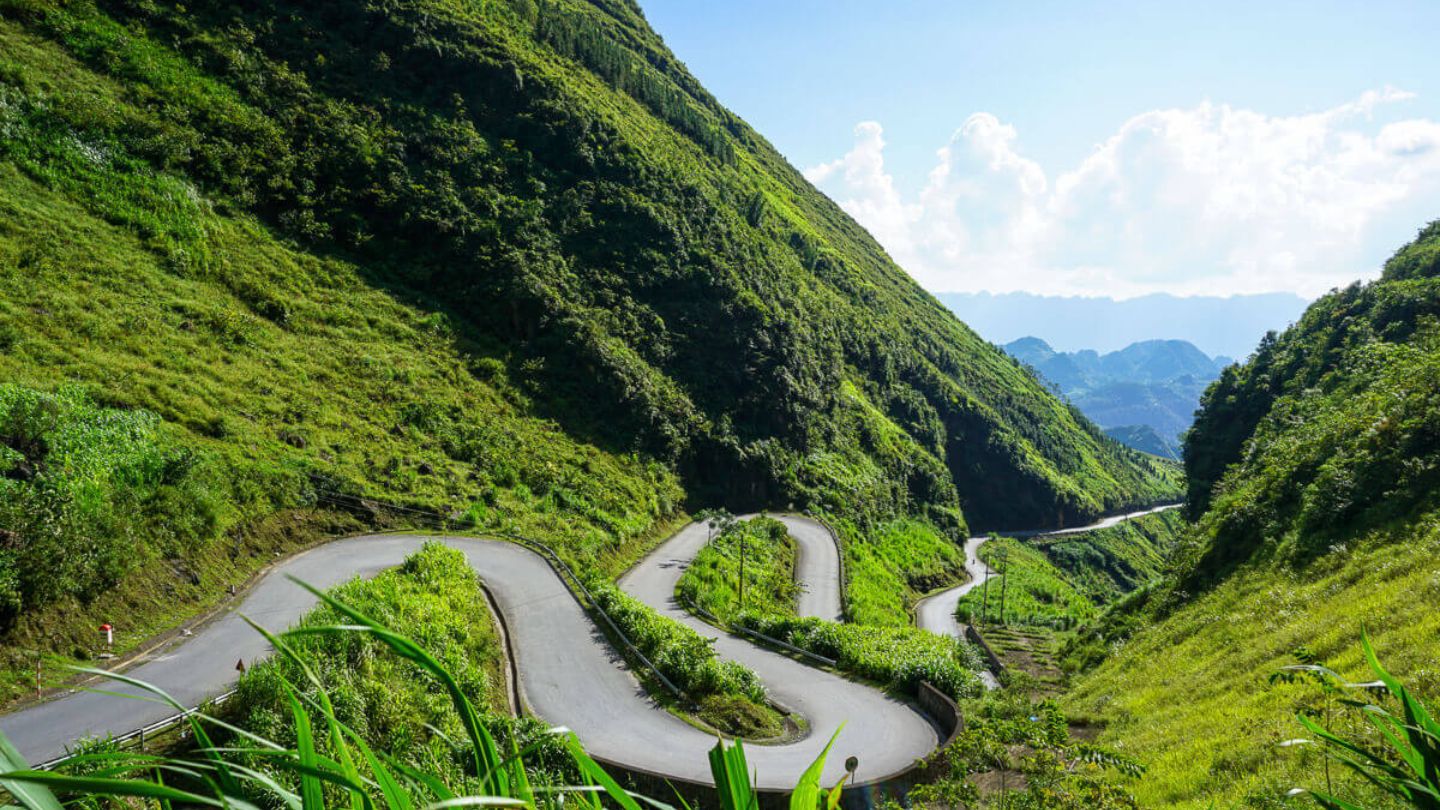
Unforgettable trekking routes in Ha Giang Loop - Tuyen Quang (current)
06 Sep, 2025
An Overview of Ha Giang (former) – Tuyen Quang (current) Ha Giang, situated at the northernmost tip of Vietnam and sharing a border with China, is a province renowned for its breathtaking landscapes and cultural richness. Characterized by towering limestone mountains, winding passes, deep valleys, and terraced rice fields carved into the hillsides, the region offers an almost otherworldly beauty that captures the hearts of adventurous travelers. Unlike more commercialized destinations, Ha Giang retains its raw, untamed charm, making it a perfect setting for trekking and outdoor exploration. The province is home to more than 20 ethnic minority groups such as the H’Mong, Tay, Dao, and Lo Lo, whose traditional villages and vibrant markets bring unique cultural encounters to every journey. For trekkers, this means not only walking through dramatic mountain scenery but also immersing in authentic local life, where ancient customs and warm hospitality are still deeply preserved. However, in 2025, the administrative boundary changed once again, as Ha Giang was merged with Tuyen Quang to establish the new province of “New Tuyen Quang.” This reorganization marked a significant shift in the region’s governance while the landscapes, culture, and traditions that define Ha Giang continue to thrive and attract travelers from around the world. Trekking in Ha Giang is both a physical and cultural adventure. Trails often wind through karst plateaus, remote valleys, and forested paths, rewarding hikers with panoramic views of iconic landscapes like the Ma Pi Leng Pass, Dong Van Karst Plateau, and rice terraces in Hoang Su Phi. Each route presents varying levels of challenge, from gentle walks through villages to strenuous climbs up rugged mountain ridges, making Ha Giang a destination suitable for both casual hikers and seasoned adventurers. With its untouched natural beauty, rich ethnic traditions, and diverse trekking routes, Ha Giang is an ideal place to discover Vietnam nature, offering unforgettable experiences that blend adventure with cultural exploration. Trekking Highlights in the Ha Giang Loop Dong Van Karst Plateau Geopark A UNESCO-recognized site, Dong Van Karst Plateau is a must for hikers who love dramatic scenery. The trekking trails here lead you across ancient limestone formations, steep valleys, and charming ethnic minority villages. The views are spectacular, especially at sunrise and sunset when the mountains glow with golden hues. Ma Pi Leng Pass Trekking Route Known as the "King of Passes" in Vietnam, Ma Pi Leng offers one of the most iconic trekking experiences in Ha Giang. Hiking along its rugged paths gives you a chance to admire panoramic views of the Nho Que River winding through deep canyons. It’s a challenging trek but worth every step for the jaw-dropping scenery. Lung Cu Flag Tower and Surroundings For those who enjoy combining trekking with cultural experiences, Lung Cu is the perfect choice. A moderate hike takes you up to the northernmost point of Vietnam, marked by the Lung Cu Flag Tower. The journey also passes through traditional Hmong villages, where you can learn about local customs and daily life. Hoang Su Phi Rice Terraces If you’re trekking between September and October, the rice terraces of Hoang Su Phi are at their most stunning. The trails here meander through golden fields, misty hillsides, and quiet farming hamlets. It’s an ideal route for travelers seeking peaceful scenery and authentic encounters with ethnic minority communities. Tips for Trekking in Ha Giang Best time to visit: March–May and September–October for the most pleasant weather and stunning landscapes. Guides: Consider hiring a local guide for safety and to learn more about the culture. Gear: Good hiking shoes, light layers, and rain protection are essential. Respect: Always be mindful when visiting villages—ask before taking photos and support local services when possible. Trekking in the Ha Giang Loop is an adventure filled with natural beauty, cultural immersion, and unforgettable moments. Whether you’re conquering the Ma Pi Leng Pass, wandering through the rice terraces of Hoang Su Phi, or standing proudly at Lung Cu, each route offers a unique perspective of this northern paradise. For travelers seeking more than just sightseeing, Ha Giang promises an experience that stays in the heart long after the journey ends.
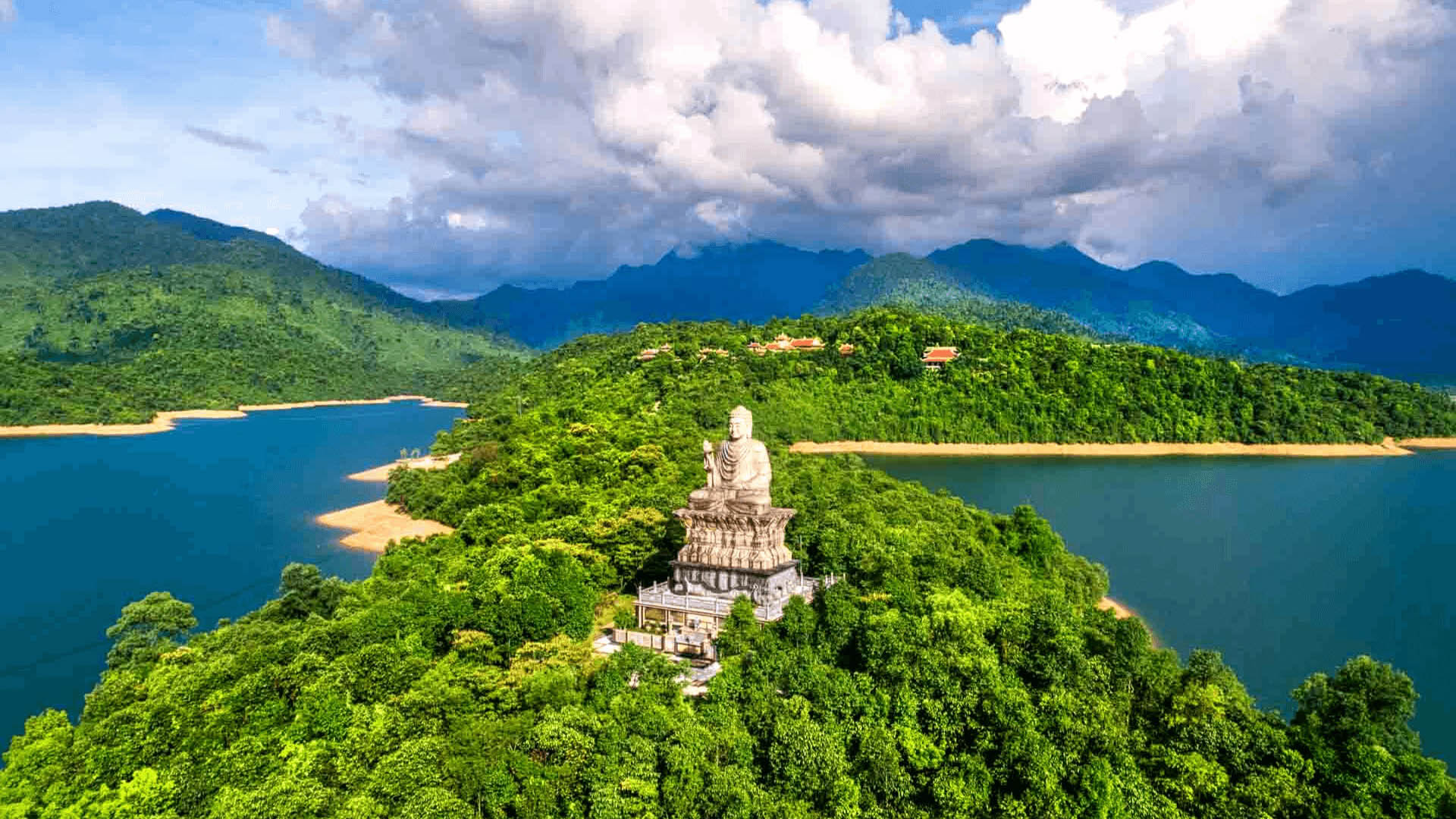
Exploring Bach Ma National Park – The hidden gem for hikers in Central Vietnam
06 Sep, 2025
General Information about Bach Ma National Park Bach Ma National Park was established in 1991 to protect the unique flora and fauna of the Annamite Mountains. Covering an area of over 37,000 hectares, the park stretches from the coast to the high mountains, creating diverse habitats that are home to more than 2,000 species of plants and 1,400 species of animals. The highest point in the park is Bach Ma Peak, which rises 1,450 meters above sea level. Thanks to its altitude, the climate here is refreshingly cool year-round, making it an ideal destination to escape Vietnam’s tropical heat. Located just 40 km from Hue city and 65 km from Da Nang, the park is easily accessible for day trips or longer nature explorations. Bach Ma is renowned for Vietnam's natural beauty. As you venture deeper into the park, you’ll find yourself surrounded by dense evergreen forests, tranquil lakes, and vibrant orchid gardens. The park’s altitude variations allow visitors to experience a remarkable range of landscapes, from coastal plains to mist-covered peaks. The Five Lakes (Ngu Ho) area is a favorite among visitors, consisting of five crystal-clear lakes connected by small waterfalls. It’s a perfect spot to relax, swim, or enjoy a picnic in the middle of nature. Another highlight is Do Quyen Waterfall, a majestic cascade plunging 300 meters down the cliffs. In spring, rhododendron flowers bloom along its banks, adding even more beauty to the scene. For panoramic views, the summit of Bach Ma Peak offers breathtaking vistas of Lang Co Beach, Hai Van Pass, and the Cau Hai Lagoon below. On clear days, you can even see both the East Sea and the lush valleys that surround the region. Hiking Trails in Bach Ma National Park Bach Ma is a hiker’s paradise, with trails suited for all levels of fitness and adventure. From gentle walks through lush forests to challenging ascents leading to panoramic mountain views, the park offers something for everyone. Along the way, you’ll encounter cool streams, cascading waterfalls, and a rich diversity of wildlife. Whether you’re a casual nature lover or an experienced trekker, Bach Ma promises a rewarding journey into one of Central Vietnam’s most breathtaking natural landscapes. Bach Ma Summit Trail: A relatively easy trek leading to the park’s highest point at 1,450 meters. The trail winds through lush forests and rewards hikers with sweeping views at the summit. Five Lakes Trail: A moderate hike that takes you through the forest to the chain of five lakes. Along the way, you’ll encounter small waterfalls and natural swimming holes—perfect for cooling off on a hot day. Do Quyen Waterfall Trail: One of the most challenging treks in the park. The trail descends more than 600 steps to the base of the waterfall, offering incredible photo opportunities and an exhilarating sense of adventure. Pheasant and Orchid Trails: Shorter routes designed for wildlife and plant observation, ideal for those interested in birdwatching and exploring the park’s rich biodiversity. Each trail is well-marked, but it’s recommended to hire a local guide if you want to discover hidden spots and learn more about the park’s ecosystem. Activities and Experiences at Bach Ma National Park Beyond hiking, Bach Ma offers a wide range of activities for nature enthusiasts. Birdwatching is a highlight, as the park is home to rare species like the crested argus and Vietnamese pheasant. Photography enthusiasts will find endless inspiration, from misty forests and dramatic waterfalls to colorful butterflies and exotic flowers. Camping is another exciting option for those who want to immerse themselves in nature overnight. With the sound of rushing streams and the fresh mountain air, it’s an experience that leaves lasting memories. For history lovers, Bach Ma also has remnants of French colonial villas built in the early 20th century when the French developed the area as a hill station retreat. Exploring these ruins adds a cultural layer to your adventure in the park. Travel Tips for Visiting Bach Ma National Park Best time to visit: March to September is ideal, with dry weather and clear skies. Avoid the rainy season (October–December) when trails can be slippery. Entrance fee: Around 60,000 VND per person. What to bring: Comfortable hiking shoes, insect repellent, sunscreen, a hat, snacks, and plenty of water. How to get there: From Hue, it takes about 1.5 hours by car or motorbike. Guided tours are available from both Hue and Da Nang. Fitness level: Most trails are moderate, but some like the Do Quyen Waterfall require good stamina. Bach Ma National Park is more than just a hiking destination—it’s a place where travelers can reconnect with nature and discover the untouched beauty of Central Vietnam. From its sweeping mountain vistas and thundering waterfalls to its rich biodiversity and serene lakes, every corner of the park has something special to offer. For those seeking an escape from the city and an adventure into the wild, Bach Ma truly is a hidden gem waiting to be explored.
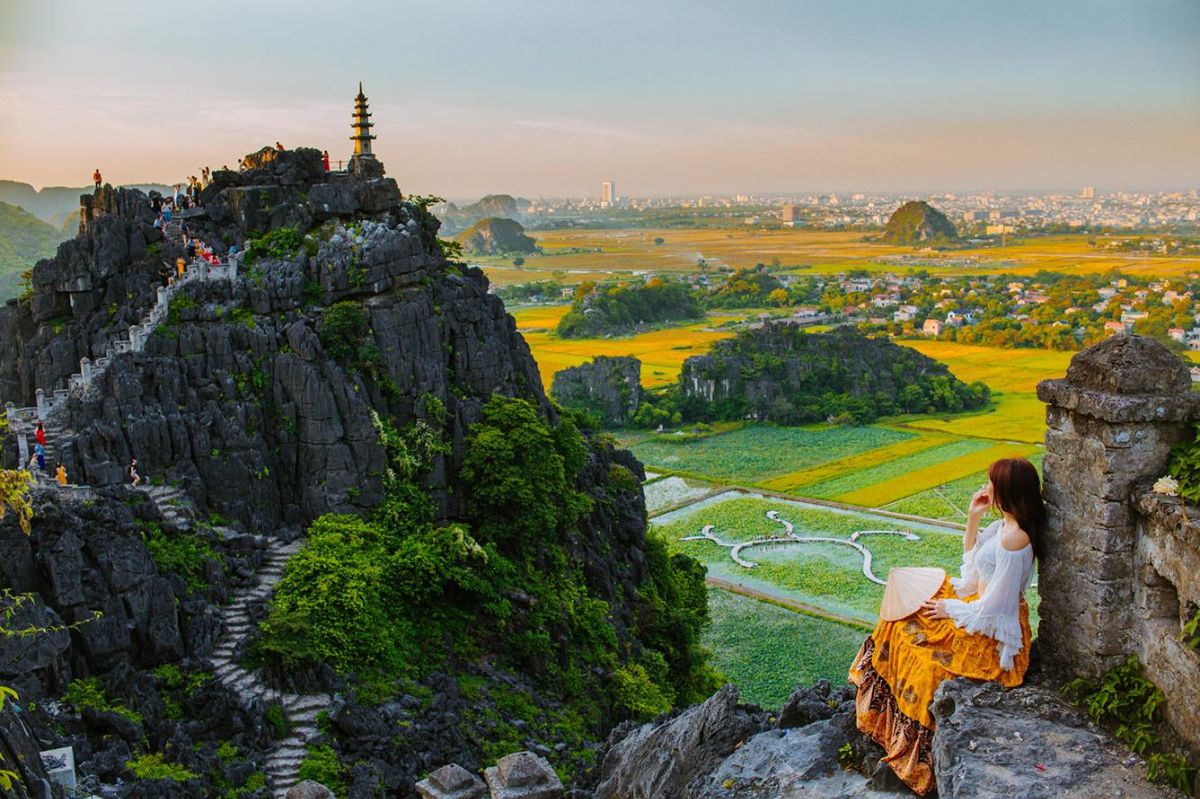
Hiking to Mua Cave for the best panoramic view of Tam Coc
06 Sep, 2025
General Information about Mua Cave Mua Cave is located in Khe Dau Ha village, Ninh Xuan commune, Hoa Lu district, just about 100 kilometers from Hanoi, making it a perfect day trip for both domestic and international travelers. The complex covers around 3.5 hectares, designed as a cultural and ecological site that preserves the charm of Northern Vietnam’s natural landscapes. Rising to a height of about 150 meters above sea level, the summit of Mua Cave is accessible through a stone staircase with nearly 500 steps. This staircase winds its way along the mountain ridge, resembling the architecture of the Great Wall of China. Hiking to the top may take 20 to 40 minutes depending on your pace, but the views are worth every step. The name “Múa,” meaning “dance,” comes from a local legend that during the Tran Dynasty, King Tran Thai Tong would often come here to watch royal dance performances. This historical connection adds a cultural depth to the experience, making Mua Cave more than just a natural attraction. Scenic Beauty at Mua Cave Mua Cave is most famous for its breathtaking panorama of Tam Coc valley. From the top, visitors are greeted with endless rice paddies stretching alongside the Ngo Dong River, interspersed with towering limestone karsts. The view changes with each season—lush green in spring, golden in summer, and misty in winter—ensuring that every visit feels unique. Adding to the charm are the dragon and phoenix statues perched on the summit, creating a mythical silhouette against the sky. These statues not only serve as striking photo backdrops but also symbolize protection and prosperity in Vietnamese culture. On clear days, the view extends as far as the Trang An scenic complex, offering a glimpse into the wider natural beauty of Ninh Binh. For those visiting in summer, the lotus pond at the base of the mountain bursts into bloom, turning the area into a sea of pink and green. This tranquil setting provides a perfect contrast to the challenge of the climb and makes Mua Cave one of the most picturesque spots in the region. The Hiking Trail to Mua Cave The hike to Mua Cave is a journey in itself. Starting at the eco-tourism complex, visitors begin their climb up a stone staircase that zigzags along the mountain’s slope. The trail is divided into two paths: one leading to the dragon statue at the highest peak, and the other toward a small pagoda. Each offers unique perspectives of the surrounding landscape, encouraging travelers to explore both if time allows. Although the hike is relatively short, it requires a bit of stamina, especially under the midday sun. The steep sections can be challenging, but there are resting points along the way where hikers can pause, catch their breath, and admire the views. Comfortable shoes, light clothing, and a bottle of water are essential for an enjoyable climb. Reaching the top feels like a triumph. The sense of accomplishment combined with the spectacular scenery creates an unforgettable moment for every traveler. For many, this is the highlight of their journey in Ninh Binh. Things to Do at Mua Cave While the hike and viewpoint are the main highlights, Mua Cave offers much more to explore. The cave itself, located at the foot of the mountain, is relatively small but showcases fascinating limestone formations that reflect the unique nature of Vietnam. Photography enthusiasts will find endless opportunities to capture memorable shots, from the mystical stairway leading to the summit to the sweeping landscapes at the top. Sunrise and sunset are especially magical, as golden light bathes the valley in a breathtaking glow. Visitors can also enjoy a peaceful walk around the lotus pond or relax in the shaded gardens near the entrance, where blooming lotus flowers create a serene and romantic setting, perfect for unwinding after the climb. Tips for Visiting Mua Cave The best time to visit Mua Cave is during the rice harvest season from May to June, when the fields below turn golden and create a breathtaking contrast with the limestone mountains. Another ideal period is September to October, when the weather is cool and skies are clear, offering the best conditions for hiking and photography. The entrance fee to the complex is around 100,000 VND per person. Visitors should prepare comfortable walking shoes, sunscreen, a hat, and water to ensure a smooth hike. If you plan to capture photos, visiting early in the morning or late in the afternoon will help you avoid crowds and harsh sunlight. For a complete experience, travelers can combine a trip to Mua Cave with nearby attractions such as Tam Coc boat ride, Trang An scenic landscape, or Bai Dinh Pagoda. This way, you can enjoy both the cultural and natural wonders that make Ninh Binh a must-visit destination. Hiking to Mua Cave is more than just a physical journey—it’s an experience that connects travelers with the essence of Ninh Binh’s beauty. From the challenging stone steps to the rewarding views at the top, every moment spent here is filled with wonder. Whether you’re a passionate hiker, a photographer searching for the perfect shot, or simply a traveler seeking peace in nature, Mua Cave promises memories that will last a lifetime.
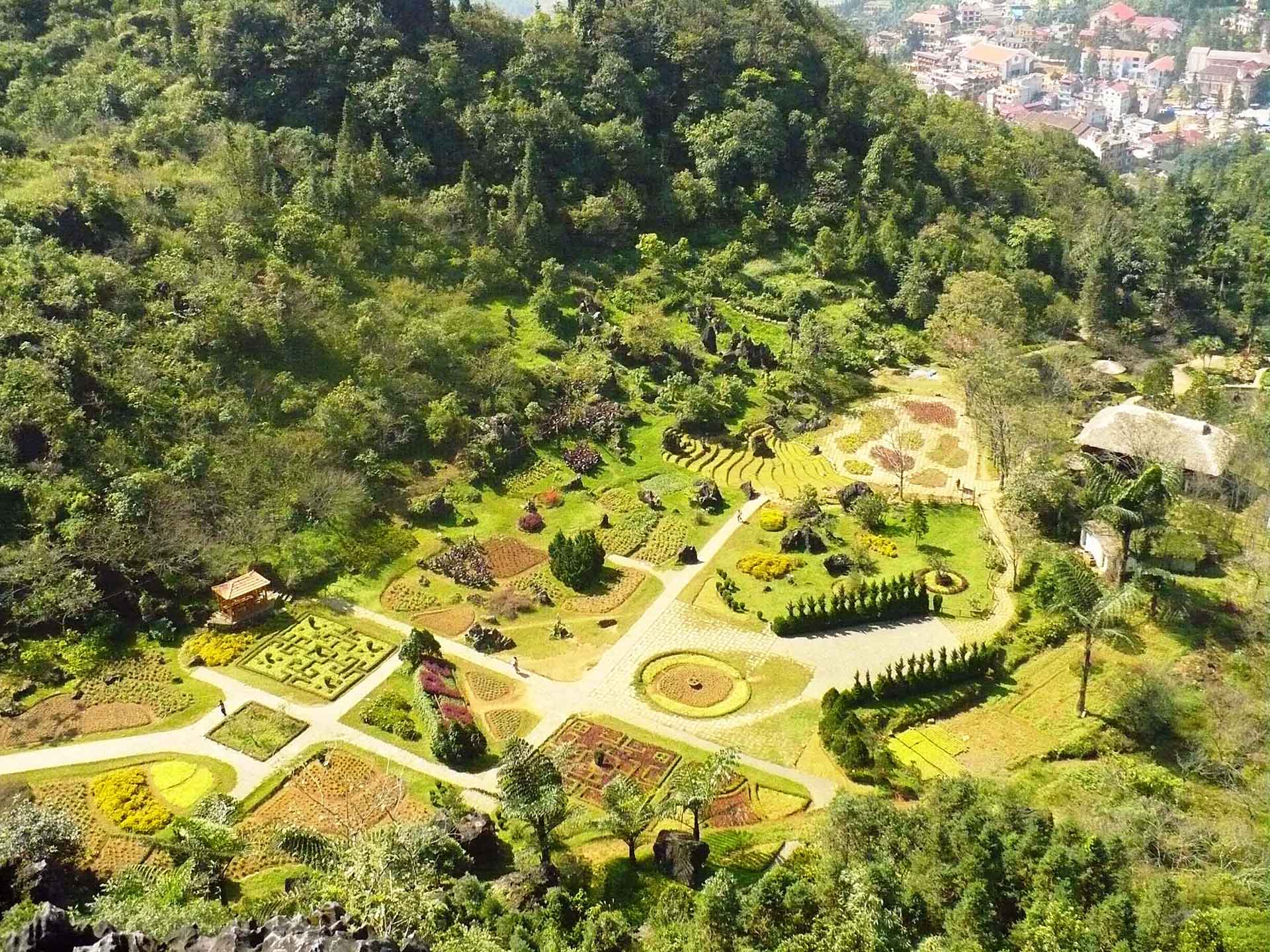
Discover the breathtaking beauty of Ham Rong Mountain
06 Sep, 2025
A Symbolic Peak of Sapa Nestled in the heart of Sapa town, Ham Rong Mountain stands as one of the most iconic landmarks of Northern Vietnam. Rising 1,800 meters above sea level, it is not only a cultural symbol but also a stunning showcase of Vietnam nature, where visitors can admire panoramic views, vibrant flower gardens, and the charm of local legends. Its name, meaning “Dragon Jaw,” comes from the unique shape of its peak, resembling a dragon’s head gazing proudly at the sky. The climb to Ham Rong Mountain rewards travelers with spectacular vistas. From the viewing platforms, visitors can take in sweeping views of Sapa town, terraced rice fields, and majestic peaks like Fansipan, the “Roof of Indochina.” On clear days, the sight of clouds drifting across the valley creates a magical atmosphere that makes Ham Rong one of the best spots for photography in Sapa. A Garden of Flowers and Orchids One of the highlights of Ham Rong Mountain is its orchid garden, home to more than 200 species of orchids blooming in vibrant colors. Along the trails, you’ll also find themed gardens such as the European Garden, Cloud Garden, and peach blossom groves, which paint the mountain with a kaleidoscope of colors throughout the year. The floral displays make Ham Rong a must-visit for nature lovers and photography enthusiasts. Springtime brings a special charm to Ham Rong, when peach blossoms, plum blossoms, and orchids bloom in unison, turning the mountain into a floral wonderland. Meanwhile, autumn offers golden-hued landscapes and crystal-clear skies—perfect for trekking and sightseeing. As you wander through the mountain’s paths, you may also encounter performances of traditional dances and folk music by ethnic minority groups such as the H’Mong and Dao. These cultural activities add a deeper layer of meaning to your journey, offering insights into the heritage of the region. How to Visit Ham Rong Mountain Ham Rong Mountain is conveniently located just a few minutes’ walk from the center of Sapa town, making it easily accessible for all visitors. The entrance fee is around 70,000 VND for adults and 30,000 VND for children. The best time to visit is in spring, from February to April, when flowers are in full bloom and the weather is pleasant. Autumn, from September to November, is also ideal for enjoying clear skies and stunning views. With its harmonious combination of natural landscapes, vibrant gardens, and cultural charm, Ham Rong Mountain is a destination that truly captures the essence of Sapa. Whether you’re seeking breathtaking views, peaceful walks through flower gardens, or a glimpse into local traditions, a visit to Ham Rong will leave you with unforgettable memories of Northern Vietnam’s beauty. Top Things to Do in Ham Rong Mountain Climb to the Cloud Yard (Sân Mây): The Cloud Yard is one of the most popular viewpoints on Ham Rong Mountain. Standing here, you’ll feel like you are floating above the clouds while gazing at the breathtaking panorama of Sapa, Muong Hoa Valley, and Fansipan Mountain. Visit the Orchid Garden: With over 200 species of orchids, this garden is a feast for the senses. Take your time to explore the vibrant flowers, capture stunning photos, and enjoy the fragrant air. Stroll through Themed Gardens: Don’t miss the European Garden, Cloud Garden, and peach blossom groves. Each garden has a unique character and is designed to highlight both local and exotic plants, making your walk more enjoyable. Enjoy Ethnic Minority Performances: Traditional dances and folk songs performed by the H’Mong, Dao, and Tay people are staged at various points along the trails. These performances showcase the unique traditions and vibrant culture of Sapa’s ethnic communities. Capture Stunning Photos: Every corner of Ham Rong Mountain offers a new photo opportunity—whether it’s a sea of clouds, blossoming flowers, or traditional performances. It’s a dream location for photographers and Instagram lovers alike. Relax and Connect with Nature: Ham Rong Mountain is also a place for peace and relaxation. Take a leisurely stroll, breathe in the fresh mountain air, and enjoy the sense of calmness away from the bustling town center. With its harmonious combination of natural landscapes, vibrant gardens, and cultural charm, Ham Rong Mountain is a destination that truly captures the essence of Sapa. Whether you’re seeking breathtaking views, peaceful walks through flower gardens, or a glimpse into local traditions, a visit to Ham Rong will leave you with unforgettable memories of Northern Vietnam’s beauty.
Experiences & Activities

Mekong Delta - Vinh Trang Pagoda full-day tour
1 day
On this Vung Tau tour, start by relaxing at the beautiful Vung Tau Beach, where you can soak up the sun and enjoy the gentle sea breeze. Next, visit the iconic Christ the King Statue, a must-see landmark offering stunning views of the surrounding area. Continue to the Whale Temple (Den Ca Ong), a spiritual site rich in local culture and history. Explore the historic White Palace (Bach Dinh), a former residence of French governors that showcases remarkable architecture. Finally, end your day at Nghinh Phong Cape, where you can admire panoramic views of the sea and capture unforgettable photos of the coastline.

A romantic adventurous Vietnam journey in 10 days 9 nights
10 days 9 nights
Embark on a captivating 10-day odyssey through Vietnam, perfectly curated for couples seeking both profound cultural immersion and exhilarating adventure. This journey weaves together the ancient charm of Hanoi with the mystical karst landscapes of Halong Bay, offering an overnight cruise under a starlit sky. Discover the imperial grandeur of Hue and the timeless allure of Hoi An, where lantern-lit nights and riverside tranquility set the scene for romance. Venture into the vibrant Mekong Delta, exploring its floating markets and lush waterways.

5D4N_Hanoi_Halong on cruise exploration
5 days 4 nights
This 5 days journey brings you through the best of Northern Vietnam: the cultural charm of Hanoi, the breathtaking landscapes of Halong Bay, and the serene beauty of Ninh Binh. Guests will enjoy a luxury overnight cruise, visit magnificent caves, kayak among limestone mountains, relax on the sundeck at sunset, and savor premium onboard cuisine. The tour is perfect for travelers seeking both relaxation and immersive nature experiences.

Unique Vietnam local 6 days 5 nights
6 days 5 nights
This 6-day journey takes travelers through Hanoi, Halong Bay, Ninh Binh, and Mai Chau, offering a rich blend of cultural and natural experiences. Highlights include a relaxing massage, a Hanoi city tour, a 4–5-star Halong cruise, a Tam Coc – Thung Nham boat trip, and trekking in the Mai Chau valley. Guests will visit famous landmarks such as Sung Sot Cave, Titov Island, Bai Dinh Pagoda, the Old Quarter, and traditional Thai ethnic villages. The itinerary harmonizes relaxation, exploration, culture, and local cuisine. An ideal choice for travelers seeking a complete Northern Vietnam experience in one trip.
![[S.I.C] Yen Duc village overnight: 2 days 1 night](https://ilooca-tourdb.itourism.vn//files/thumb/408/285/uploads/content/22732/693019f1c8fd3.png)
[S.I.C] Yen Duc village overnight: 2 days 1 night
2 days 1 night
This 2 day 1 night trip includes a nice stay in Viet House, unique village retreat accommodation, surrounded by rice fields in Yen Duc village. Cycling to discover peaceful village, talking with local people and visit their family house should amaze you with lots of cultural sense and fun. Besides that, joining local activities (fishing, gardening, visiting the culture house of village, local market…) bring you close to real experience of a farmers, taste delicious homemade Vietnamese food then enjoy peaceful life in countryside of Vietnam.

The perfect 3 days Sapa tour
3 days 2 nights
Prepare to be captivated by a journey where mist-shrouded peaks meet vibrant cultural tapestries. This 3-day, 2-night escape from Hanoi plunges you into the heart of Sapa's unparalleled beauty. Imagine tracing the contours of iconic terraced rice fields, a masterpiece sculpted by generations, and breathing in the crisp mountain air. Beyond the breathtaking panoramas, you'll connect intimately with the resilient ethnic minorities – the H'Mong people – in their traditional villages, witnessing ancient customs and intricate handicrafts firsthand.
Keep exploring
Top things to do in Nature & Adventure
FAQs
